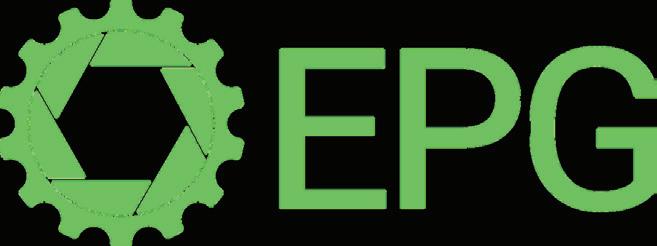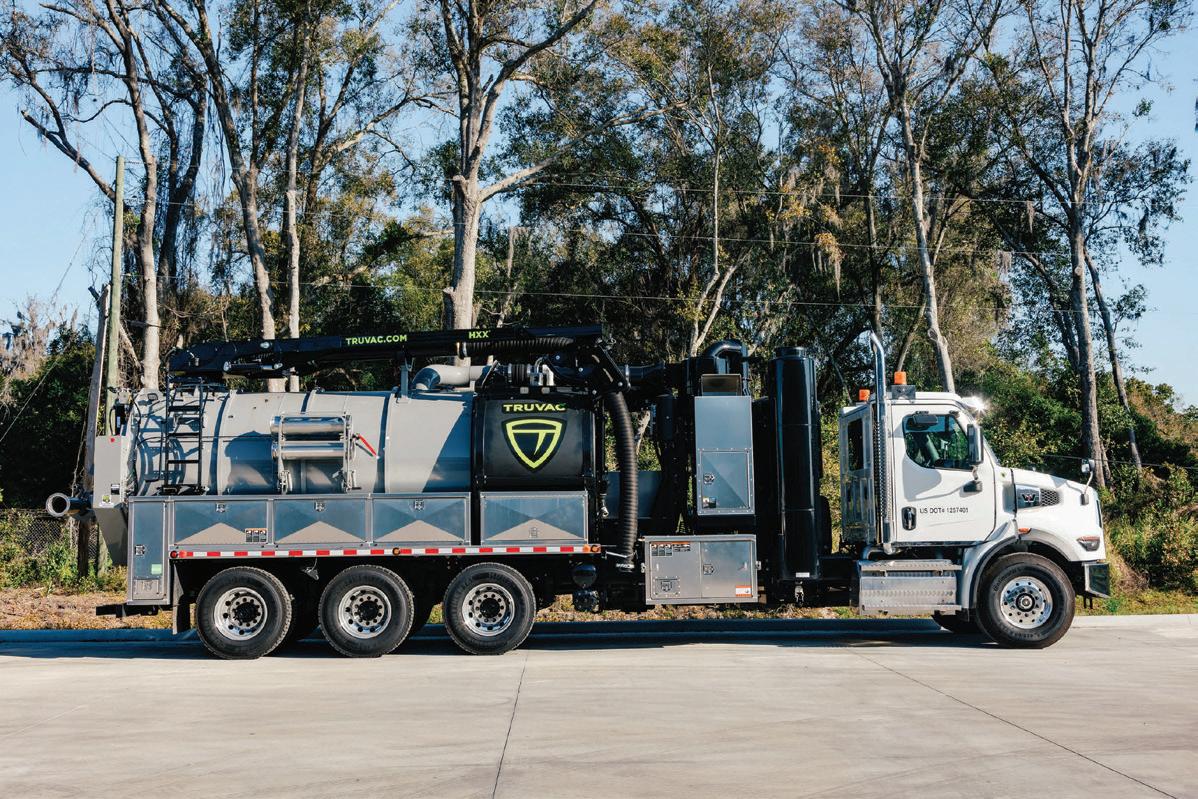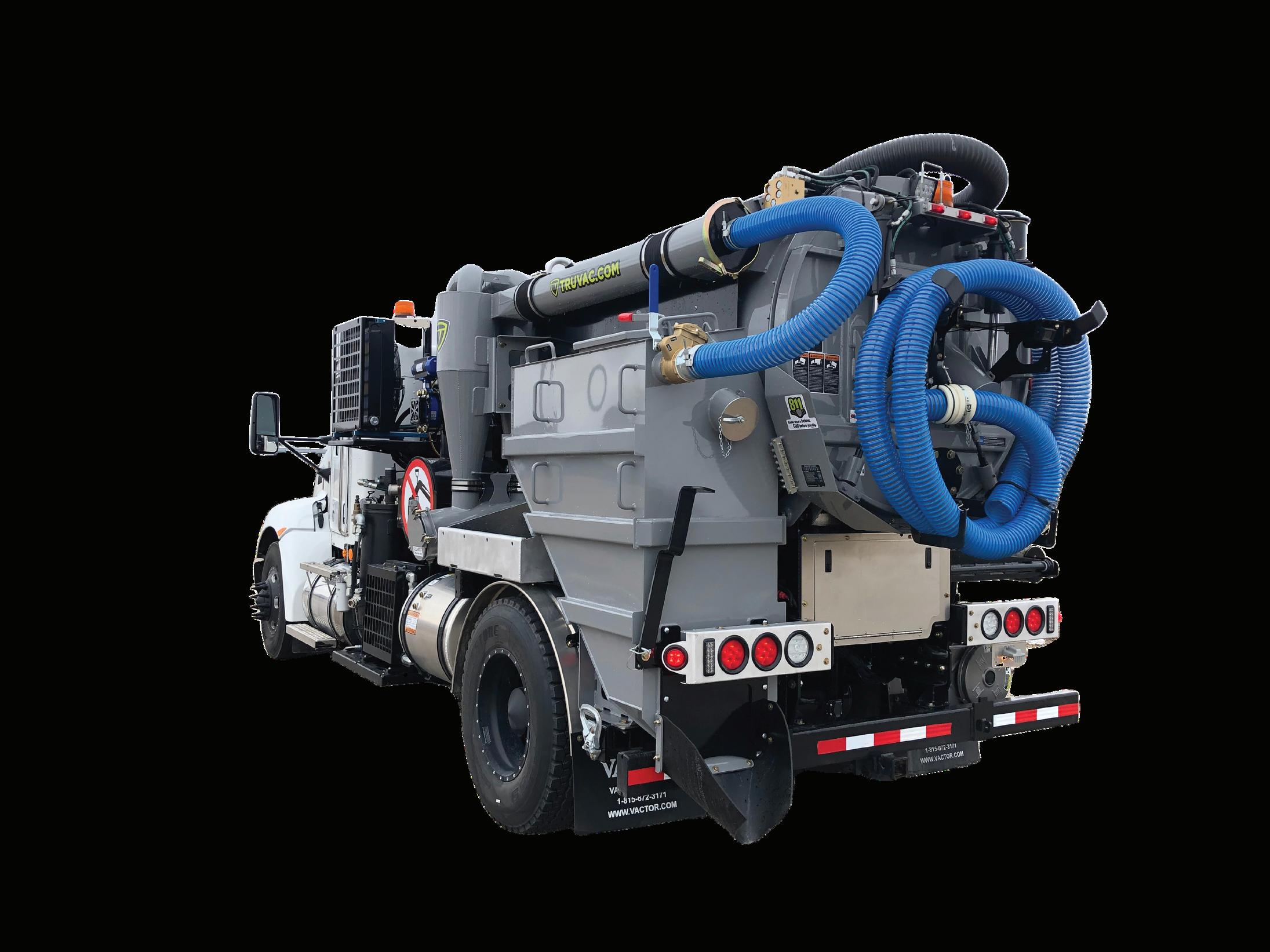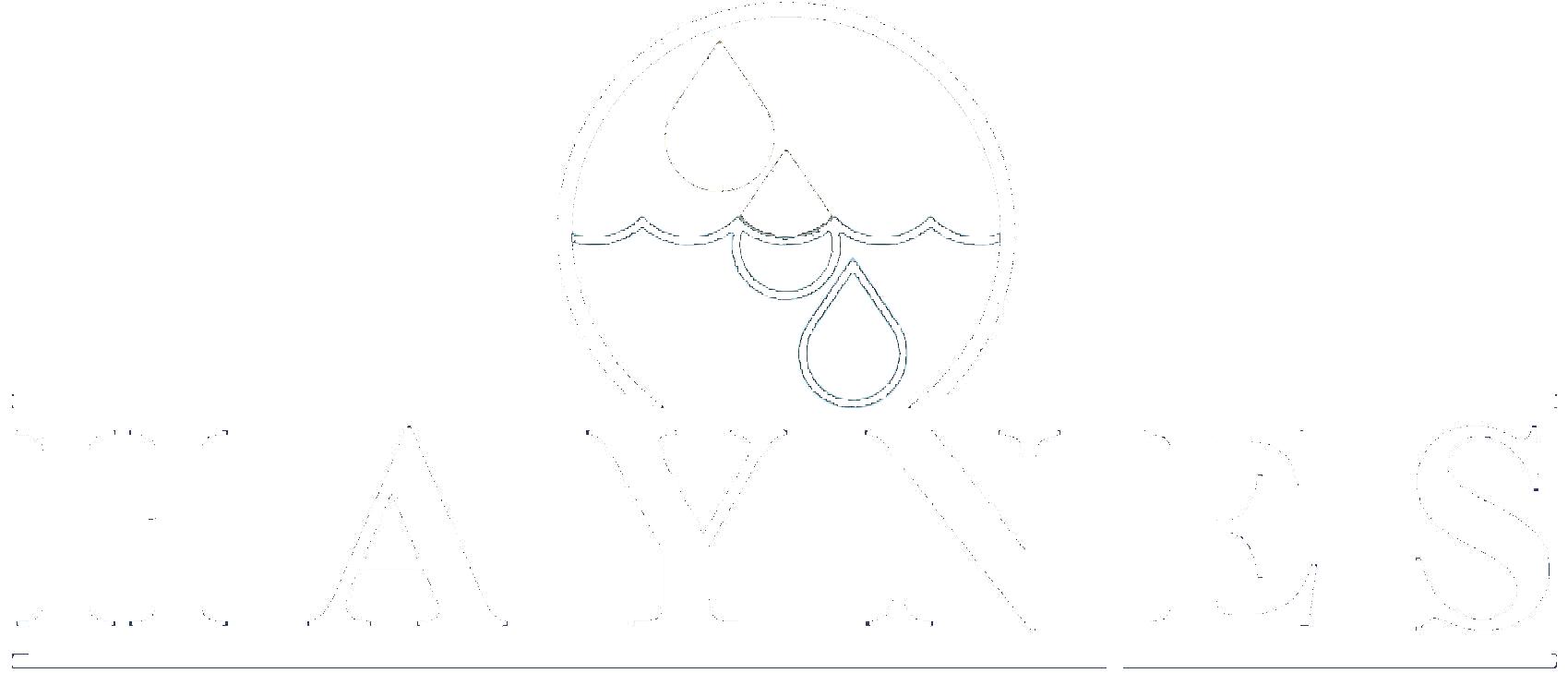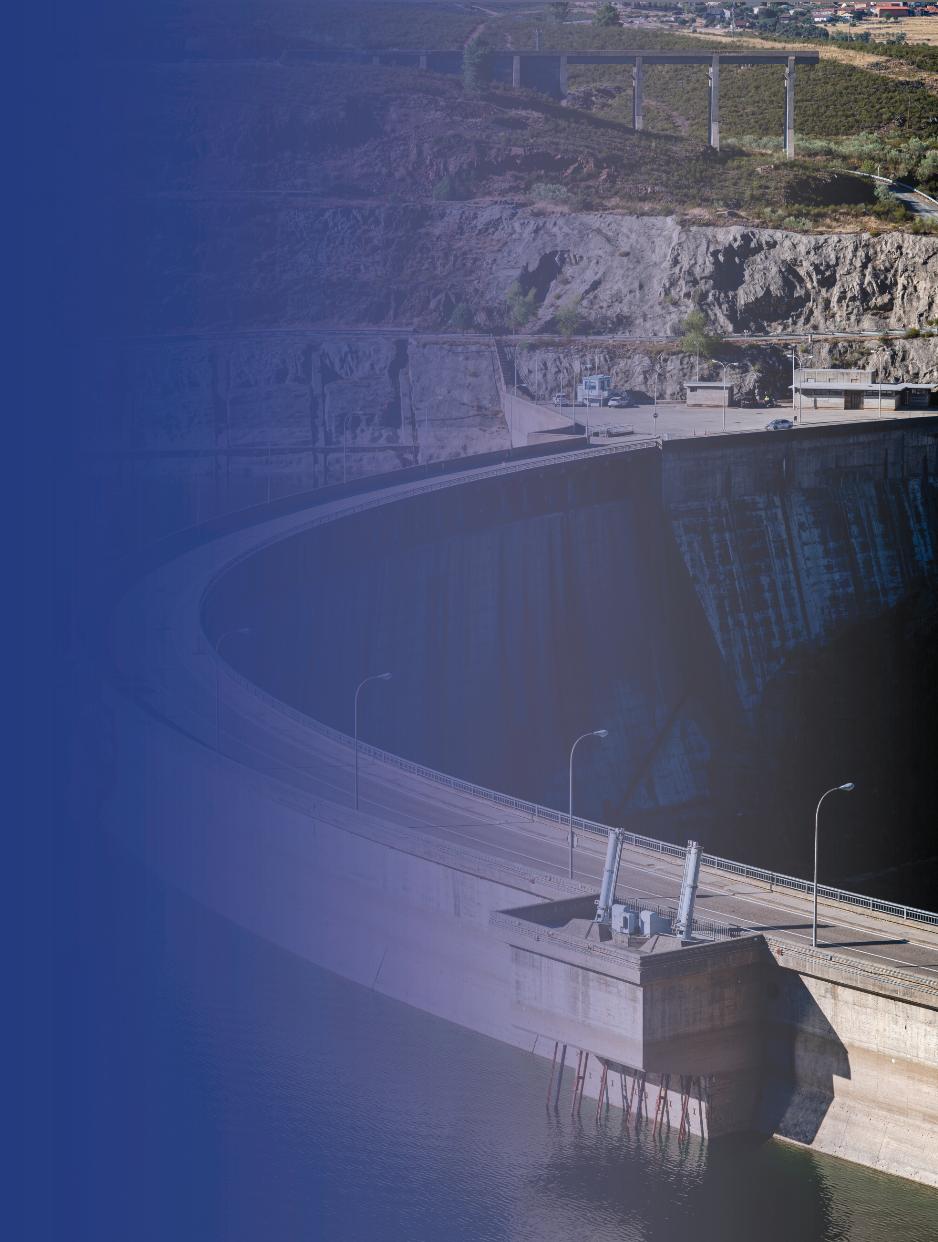THEDIGESTER

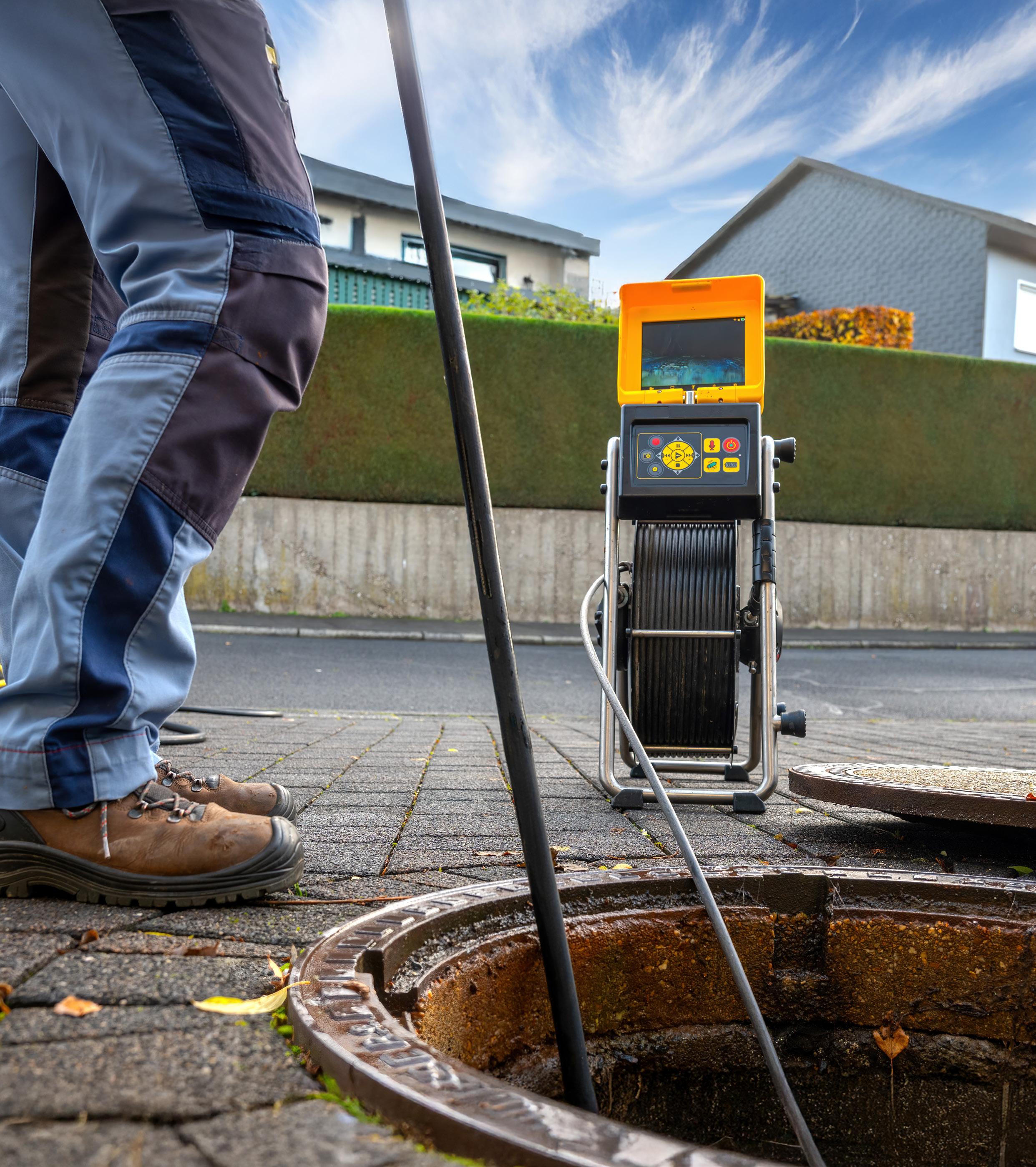
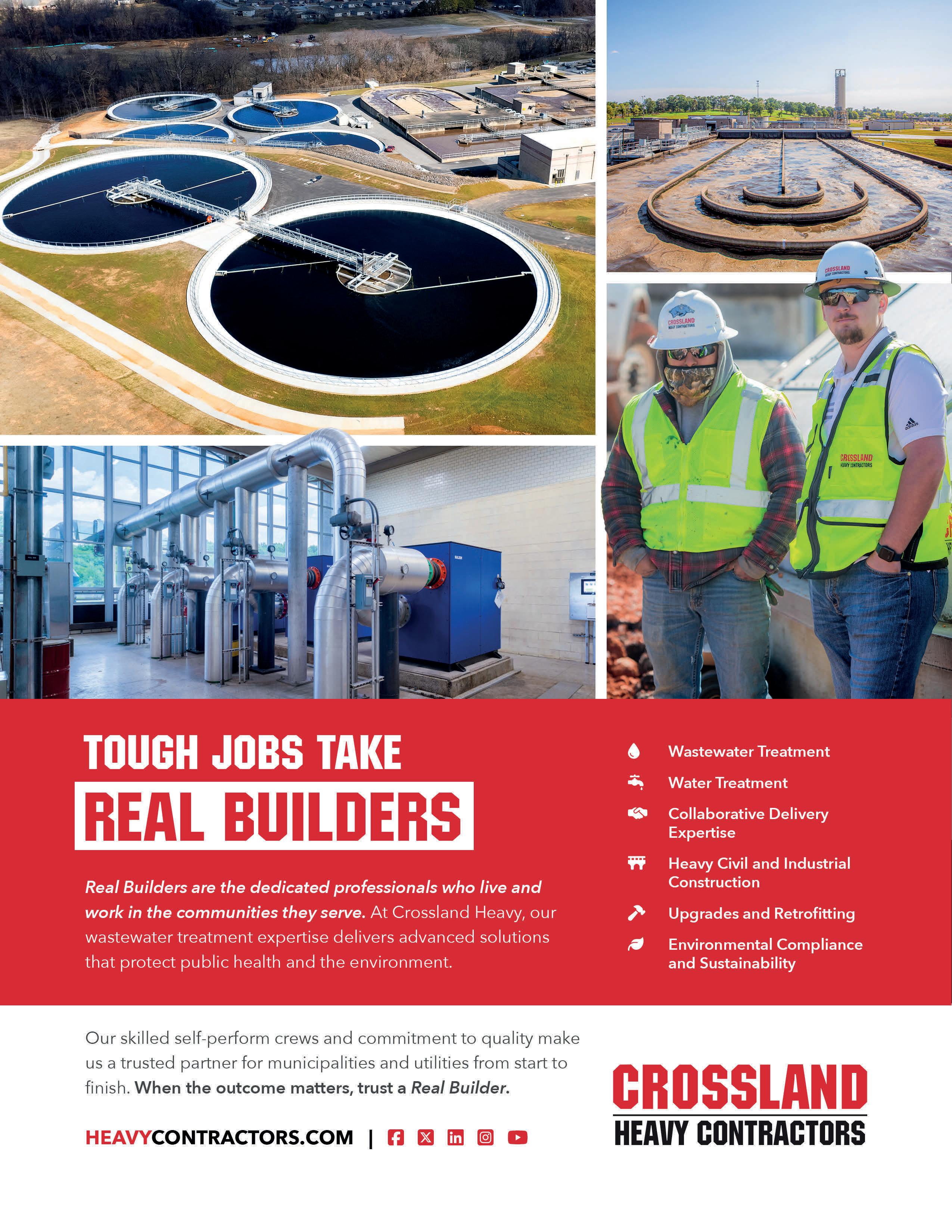




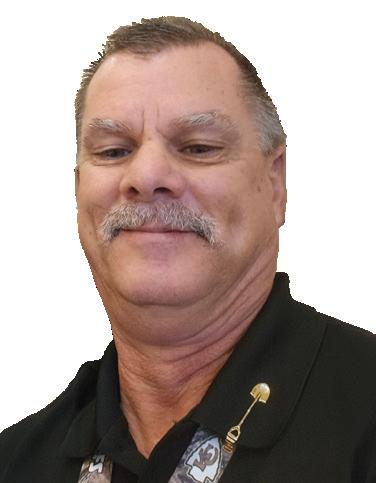









By L. Keith Carpenter, The Digester Editor
ello, my name is Keith Carpenter, and I’m honored to introduce myself as the new editor of The Digester. I’ve worked with Rogers Water Utilities for the past 25 years and currently hold a Class III Wastewater License, a D-4 Water License, and a Class III Collection System Certificate.
When Vicki Stanley invited me to take on this role, I was both humbled and excited to contribute to the revitalization of The Digester. Over the past six years, I have been actively involved with AWEA
as the Safety Chair and was recently inducted into the “Sludge Shovelers.” These experiences have deepened my appreciation for this industry and the people who make it thrive.
Our goal with The Digester is to provide fresh perspectives, share valuable insights, and highlight ideas that support the continued growth and safety of our field. We also hope to hear directly from you – our readers and sponsors – about new topics, innovations, and initiatives that can benefit us all.
Thank you for joining us on this journey. I look forward to the conversations ahead.


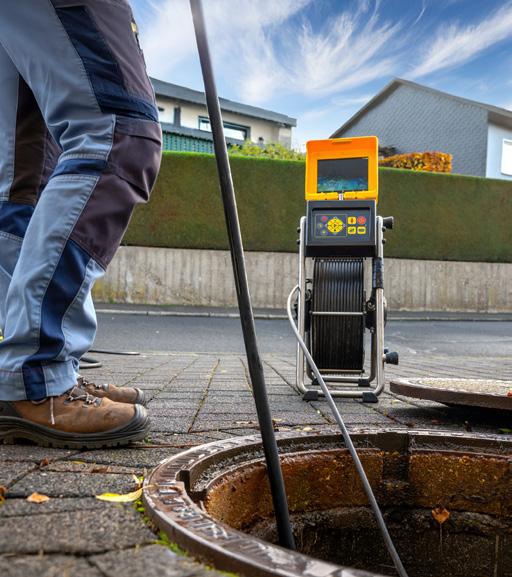
Like water itself, innovation flows through every challenge and shapes new possibilities. For over 90 years, Carollo has pioneered breakthroughs in water technology – from resilient infrastructure protecting growing communities to groundbreaking solutions safeguarding public health and ecosystems. At Carollo, innovation isn’t just about what’s new – it’s about what’s necessary. Every advancement, every improvement, and every solution flows from a single purpose: shaping a future where water enriches every community it touches.

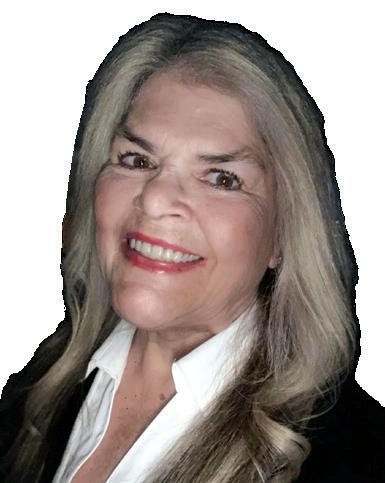
By Vicki Stanley, AWEA President
Welcome to the new The Digester magazine!
My name is Vicki Stanley, and it is both an honor and a privilege to serve as President of the Arkansas Water Environment Association (AWEA).
Some of you may know me well, some may recognize me by face or name, and others may be meeting me for the very first time. To give you a bit of background, I have been part of this industry for 27 years – all with Instrument & Supply. Over that time, I have had the opportunity to meet and work alongside so many extraordinary people across both the water and wastewater sides of our profession.
My service has included volunteering on the MAC Committee for the SWAWWA section – where I also served as Chair –and representing manufacturers on the AWW&WEA Board. On the wastewater side, I’ve held roles as Membership Chair, Secretary, Vice President, and now President. I was inducted as a Sludge Shoveler in 2019 and a Wonderful, Wise Watchdogs Willfully Wielding Water (6Ws) in 2022. Each of these experiences has deepened my respect for the work we do and the people who make it happen.
Now, I am excited to introduce the dedicated leaders who will help guide AWEA forward and continue making this organization the go-to resource for the latest technology, research, and techniques that make our work easier and more effective.
AWEA Leadership Team
• Vice President – Andy Robinson Andy serves as a Water Utilities Construction Inspector for Bentonville Water Utilities. He and his wife, Brandi, share their home with their four-legged companion, Buddy. In his free time, Andy enjoys

“
TOGETHER, WE WILL CONTINUE BUILDING AN ASSOCIATION THAT INFORMS, CONNECTS, AND STRENGTHENS OUR INDUSTRY.
fishing, home remodeling, playing music, and exploring the Crystal Bridges Museum.
• Secretary – Rebecca Burkman
Rebecca is the Director of Environmental Affairs at Little Rock Water Reclamation Authority. Rebecca serves as the Director of the AWW&WEA Central District, Arkansas Municipal Representative for Region VI Pretreatment Association. She is a member of many WEF and NACWA Committees. Aside from work, she loves enjoying the outdoors with her family.
• Past President & WEF Delegate –Tonya Wallace
Tonya is the Capital Projects Manager at North Little Rock Wastewater. She and her husband, Brandon, enjoy an active lifestyle that includes horseback riding, barrel racing, fishing, and camping.
• Awards – Tonya Wallace
• Collection System – Chris Enloe (Instrument & Supply)
• Conference – Andy Robinson
• Digester – Keith Carpenter (Rogers Water Utility)
• Education & Public Outreach –Meghan Post (Beaver Water District)
• Government Affairs –Jerry Martin (Garver)
• Lab/Pre-treatment –Rebecca Burkman
• Membership – Newton White (Instrument & Supply)
• Safety – Andrew Mosley (McIntire Management Group)
We still have a few opportunities open for leadership. The History Committee and Young Professionals Committee are both in need of chairs. If you are interested in stepping into one of these roles – or serving on any of the committees –please don’t hesitate to reach out to me or the current committee chairs. You will find contact details on our website at awea-ar.org/committees.
Together, we will continue building an association that informs, connects, and strengthens our industry. Thank you for being part of this journey – I look forward to working alongside each of you.

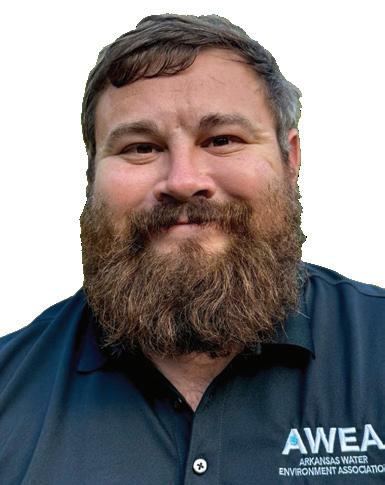
By Andy Robinson, AWEA Vice President
t is an honor to introduce myself as the new Vice President of the Arkansas Water Environment Association. My name is Andy Robinson, and I have proudly worked in the water and wastewater industry since 2006, starting just a month after graduating from Rogers High School. I currently serve the City of Bentonville, where I have had the privilege of navigating the many challenges and opportunities that come with our region’s incredible growth. I truly love what I do, and I am humbled to step into this leadership role within AWEA.
I am also excited to help usher in the return of The Digester – a publication many of us have missed and are thrilled to see revived. The Digester has always been more than a newsletter; it’s a connection point for our members, a platform for sharing ideas, and a place to celebrate the people behind the work. As we bring it back, we hope to deliver more stories that inform, entertain, and reflect the heart of our profession. Looking back, we just wrapped up an incredible 2025 Specialty Conference in beautiful Hot Springs, Arkansas. Held at the Hotel Hot Springs on August 12 and 13, the event brought together a fantastic

group of water professionals from across the state. We were honored to welcome Arkansas Attorney General Tim Griffin as our keynote speaker. His remarks reinforce the critical role our industry plays in safeguarding public health and preserving Arkansas’s natural resources.
From engaging technical sessions to the invaluable networking opportunities, this year’s Specialty Conference was a true success. On behalf of the entire AWEA board, thank you to everyone who attended, presented, and helped make the event possible. Your dedication, insight, and collaboration continue to move our industry forward.
As we begin planning for the 2026 Specialty Conference, we are exploring the opportunity to host it in Northwest Arkansas. With the region’s continued growth and innovation, we believe it would be an exciting and engaging location for our members. We would love to hear from you –what topics, speakers, or experiences would you like to see next year? Your feedback is crucial to shaping a conference that meets your needs and reflects the diversity of work we do.
Lastly, I want to extend my heartfelt thanks to everyone in the water and wastewater community – both public and private – for your tireless efforts. Your work ensures that Arkansas remains a desirable, safe, and beautiful place to live, work, and play. Whether you’re in operations, engineering, administration, or advocacy, your contributions are deeply appreciated.
If you are not already a member of AWEA, now is a perfect time to join us. Membership is available through the Water Environment Federation (WEF) or directly through our website at www.awea-ar.org
Becoming a member connects you with a network of professionals, training opportunities, and a shared commitment to advancing water quality across Arkansas. We would love to have you on board!

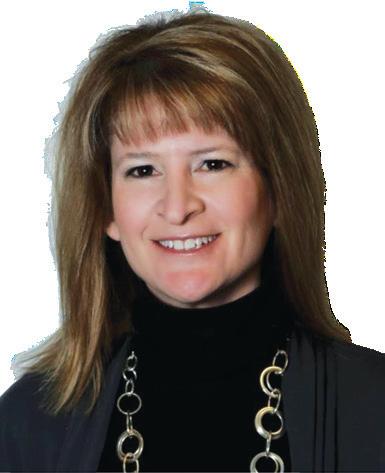
By Tonya Wallace, AWEA Past President/WEF Delegate
n 2024, our Association set an ambitious goal: to bring back The Digester, our essential source of news, technical insight, and member updates for the water industry. This publication has long served as a vital conduit for connection, innovation, and shared knowledge, and today, it is making its return thanks to the extraordinary dedication of our board members.
Unlike many organizations, ours does not rely on full-time staff to keep operations moving. The responsibility falls on the shoulders of board and committee members who not only juggle demanding roles in the water industry but also do all the groundwork to sustain the Association. From organizing events to managing communications, these volunteers make it all happen. Without them, The Digester would remain a memory – and the Association itself simply would not exist.
As someone who has served on the board, I have had the privilege of working alongside individuals whose professionalism and passion for our mission inspire me daily. These relationships have become a cornerstone of my experience, not just colleagues, but trusted collaborators. In our field, where public health, environmental stewardship, infrastructure, and safety are at stake, there is no room for compromise. Integrity must remain non-negotiable. We must continue to hold ourselves and each other to the highest standards because that is how we earn trust and drive meaningful impact.
The return of The Digester is more than just a publication; it is a symbol of what can be achieved through collaboration, accountability, integrity, and a shared commitment

“
THE RETURN OF THE DIGESTER IS MORE THAN JUST A PUBLICATION –IT IS A SYMBOL OF WHAT CAN BE ACHIEVED THROUGH COLLABORATION, ACCOUNTABILITY, AND INTEGRITY.
to excellence. It is also a renewed opportunity for every member of AWEA to engage more deeply –whether by serving on a committee, contributing to a technical article, or helping shape the future of our Association through board service.
This revival comes on the heels of our 2025 AWEA Specialty Conference, our largest annual event and a cornerstone of our organizational sustainability. While attendance was modest compared to previous years, the quality of content delivered was exceptional.
We featured a robust lineup of speakers who shared invaluable lessons learned from real-world projects – insights that sparked meaningful dialogue
and offered practical takeaways for professionals across the water sector. The conference reaffirmed our commitment to technical excellence and provided a platform for members to connect, collaborate, and grow.
Events like the Specialty Conference not only generate critical support for our Association, but they also serve as hubs that foster ideas and relationships that fuel publications like The Digester. They remind us that even in times of uncertainty or transition, our strength lies in our collective effort and shared purpose.
I am excited about what lies ahead and proud to be part of a community that values both progress and principles.


By Newton White, Influent Integrator & Vicki Stanley, Sludge Shoveler
he origins of the Select Society of Sanitary Sludge Shovelers (5S) trace back to August 1937, when the “High Hat Society” was introduced at a Pennsylvania Sewage Works Association meeting in State College, PA. During the initiation ceremony, H.E. (Ted) Moses gave the first presentation and jokingly referred to the group as the “Sludge Shovelers Society.” Over time, this became formally known as the Ted Moses Sludge Shovelers Society.
Three years later, A.W. “Dusty” Miller and F. Carlyle Roberts, Jr. of the Arizona Water Pollution Control Association helped establish the Select Society of Sanitary Sludge Shovelers. The purpose of the society was clear: to recognize members who contribute above and beyond to their association’s success, often without receiving other honors or holding official positions.
The Sludge Shovelers has no constitution, dues, or formal structure. Membership cannot be applied for – individuals must be selected.
The society has only one officer, the “Influent Integrator,” designated by “pH7.” This officer records selections, presents certificates and badges (gold shovel tie bar or lapel pin), and communicates with members.
Initiation ceremonies vary by chapter, ranging from solemn to lighthearted. Most lean toward humorous and playful, with inductees “elevated to the highest ridge of the sludge bed.” Once initiated, members gain recognition throughout WEF circles worldwide.
Although one chapter once considered renaming itself the “Select Society of Biosolids Shovelers” to be more modern, the idea was abandoned when members realized the acronym would become “Select Society of BS.”
The Arkansas Select Society of Sludge Shovelers was established in 1982, with Larry Weir, Bill Turner, Frank Murphy, and Carl Reams as its first inductees. Larry Weir and Bill Turner are still both productive and strong; however, Frank Murphy and Carl Reams are sadly both deceased.
Larry’s membership number is 1.82 signifying that he was the first and was inducted in 1982.
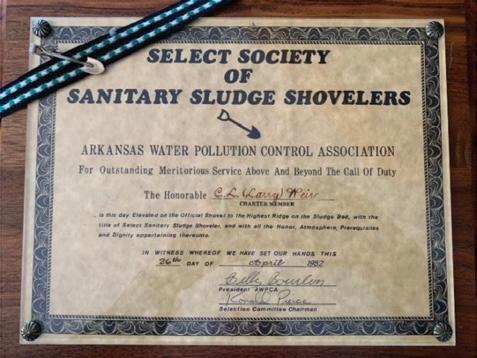
Assisted by the Arizona Society, Arkansas developed today’s bylaws allowing up to four voting members and one honorary non-voting member per year. Nominees must be active in the Arkansas Water Environment Association (a WEF member organization), AWWA, Wastewater Managers Association, Rural Water Association and demonstrate service to the water and wastewater industry. Eligible contributions include committee work, leadership roles, presentations at conferences, or volunteer service with agencies such as the Arkansas Department of Health or legislative committees.
Honorary members must be affiliated with WEF or AWWA, live outside Arkansas, or otherwise contribute to the industry within the state of Arkansas.
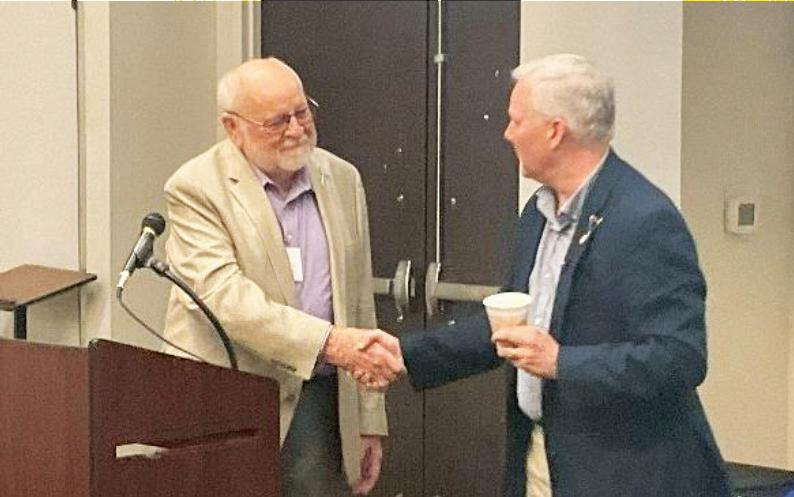
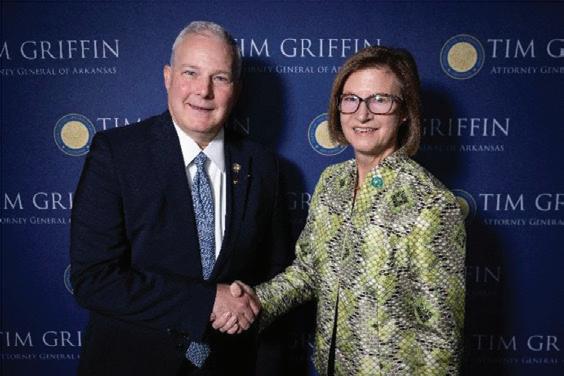
At the 2025 AWEA Specialty Conference in Hot Springs, Keynote Speaker, Tim Griffin received an honorary Sludge Shoveler lapel pin from Influent Integrator, Newton White. Arkansas Attorney General Tim Griffin has the membership number of H115.25. The H in front of the number indicates honorary.
Sludge Shoveler 38.04, Jane Hurley congratulates AG Tim Griffin on his newly acquired Honorary Shoveler Lapel pin. AG Griffin placed his Shoveler lapel pin next to his lapel pin of the Great Seal of Arkansas.
In Arkansas, induction is a surprise. Candidates are escorted to the front, handed a bucket filled with sand and a shovel, and required to hold the bucket at arm’s length while their nominator shares embellished stories about them. The candidate must keep their arm straight the entire time.
To complete the ceremony, inductees must recite “Arkansas Select Society of Sanitary Sludge Shovelers” three times quickly – or until the audience approves. New members receive their shovel, bucket, and certificate, then walk the exhibit floor collecting donations for Water For People.
At present, the Arkansas Sludge Shovelers recognizes 115 inducted members. This encompasses honorary nonvoting members, deceased individuals, those who have relocated outside the state, and individuals no longer engaged in the profession.
It is time to start submitting nominations for the following awards that will be presented at the 2026 AWW&WEA Conference All Awards Luncheon in Hot Springs, Arkansas. All nomination forms and descriptions of each award can be found at www.awea-ar.org under the Awards tab. Please submit the completed nomination forms to: info@awea-ar.org by January 15, 2026.
Water Environment Federation Awards
• Hatfield
• Burke
• Bedell
• WEF Laboratory Analyst Excellence Award
• Quarter Century Club
AWEA Awards
• Mike Thomason Wastewater Manager
• Young Professional of the Year
• Collection Systems Award
• Safety for Cities with Population >20,000
• Safety for Cities with Population <20,000
• Safety Professional of the Year
• Laboratory Analyst of the Year
• Pretreatment Coordinator of the Year
• Industrial Safety Award
• James Bailey Memorial Educator of the Year

If you have any questions, please reach out to me at 501-765-2333 or via email twallace@nlrwu.com. Thank you, Tonya Wallace, AWEA Past President/WEF Delegate/Awards Committee Chair



By Vicki Stanley, AWEA President
Winston Churchill once remarked, “We make a living by what we get. We make a life by what we give.” More than a reflection on generosity, this observation underscores a profound truth: fulfillment and progress are achieved when we dedicate our time and talents to something larger than ourselves.
In the water and wastewater industry, where professionals safeguard one of society’s most critical resources, the value of giving takes on unique importance. Our work does not end at the boundaries of treatment facilities, laboratories, or utility offices. It extends into the committees, conferences, competitions, and publications that advance our field, elevate professional standards, and inspire the next generation. Volunteering is not merely optional – it is essential to ensuring innovation, resilience, and sustainability within our industry.
Many professionals hesitate to get involved because of competing priorities. Employers may be reluctant to allocate time for outside activities. Employees may worry that volunteering takes away from family obligations or job responsibilities. Yet these barriers, while understandable, overlook the farreaching benefits of volunteerism.
Volunteering enhances personal wellbeing, builds confidence, and creates opportunities for skill development that translate directly into the workplace. For the water sector, it ensures that critical
knowledge is shared, best practices are developed, and the industry continues to grow stronger through collective effort. Utilities and water-sector employers have much to gain from encouraging staff participation in professional organizations. Far from being a drain on resources, volunteer activities are a strategic investment.
• Professional Development: Committee work, conference planning, and technical writing sharpen leadership, project management, and communication skills. Employees gain experiences that traditional training programs cannot replicate.
• Employee Retention: Studies across industries show that employees engaged in meaningful activities report greater job satisfaction and loyalty. For utilities, where turnover can be costly, volunteer opportunities foster a sense of pride and belonging.
• Reputation and Visibility: Employers that support staff involvement in organizations such as the American Water Works Association (AWWA) or the Water Environment Federation (WEF) demonstrate industry leadership. Their employees become ambassadors, showcasing expertise and commitment to public service. From the individual’s perspective, volunteering is both a professional asset and a personal enrichment opportunity.
The 2023 LinkedIn Workplace Learning Report revealed that 92% of professionals value soft skills – such as leadership, communication, and collaboration –equally or more than technical expertise. Volunteer roles within our industry provide precisely this training ground. Chairing a committee, organizing a regional conference, or mentoring a student chapter all foster skills that enhance employability and career advancement. Beyond career benefits, volunteers often report higher self-esteem, lower stress levels, and a stronger sense of purpose. In an industry where work can be both technically demanding and emotionally taxing, these personal rewards help sustain long-term commitment and resilience. Volunteerism in our field is not abstract, it is concrete, practical, and vital. Organizations such as WEF, AWEA, AWWA, SWAWWA, and AWWMA offer countless opportunities to contribute:
• Conference Planning: Professionals with organizational skills can help design Specialty Conferences, ensuring technical sessions address emerging challenges such as PFAS treatment, cybersecurity, or climate resilience.
• Sponsorship and Outreach: Those with strong communication abilities can join Sponsorship Committees, building partnerships that sustain events and broaden industry impact.
• Technical Writing and Knowledge Sharing: Experts can write for
publications like The Digester, ensuring new technologies and best practices are widely shared.
• Competitions and Mentorship: Utility managers can support employee participation in events such as the Operations Challenge where teams showcase technical expertise, safety, and problemsolving under pressure. These events not only sharpen skills but also foster camaraderie and pride.
• Networking: Networking is more than exchanging business cards; it is a catalyst for professional growth. By cultivating meaningful connections, professionals gain access to new ideas, emerging trends, and collaborative opportunities that might otherwise remain out of reach. By networking, you can make lifelong friends within the industry. Each of these roles strengthens the industry while offering participants meaningful professional growth.
The future of water and wastewater management depends on more than technical innovations – it depends on cultivating a culture of collaboration, service, and shared responsibility.
Employers who empower their staff to volunteer, and individuals who step forward to serve, help ensure that our profession remains adaptive, resilient, and respected. Churchill’s reminder that “we make a life by what we give” resonates deeply within our industry. For water and wastewater professionals, giving takes many forms: mentoring the next generation, sharing technical expertise, organizing competitions, or simply lending time to a committee. In every case, the act of giving enriches the individual, strengthens the organization, and ensures the industry continues to thrive.
Volunteering with AWEA, SWAWWA, and on the AWW&WEA board has been one of the most rewarding experiences of my career. I’ve had the privilege of working alongside incredible people who dedicate their time and talents to strengthen our industry. Imagine the impact we can make if more of us step up – where could our industry go with your energy and ideas? Encourage your team to volunteer and watch them grow and challenge yourself to learn and lead through giving back. There is a spot waiting for you – take the step and make a difference! You can reach out to me at vstanley@isi1980.com and I WILL get you plugged in.

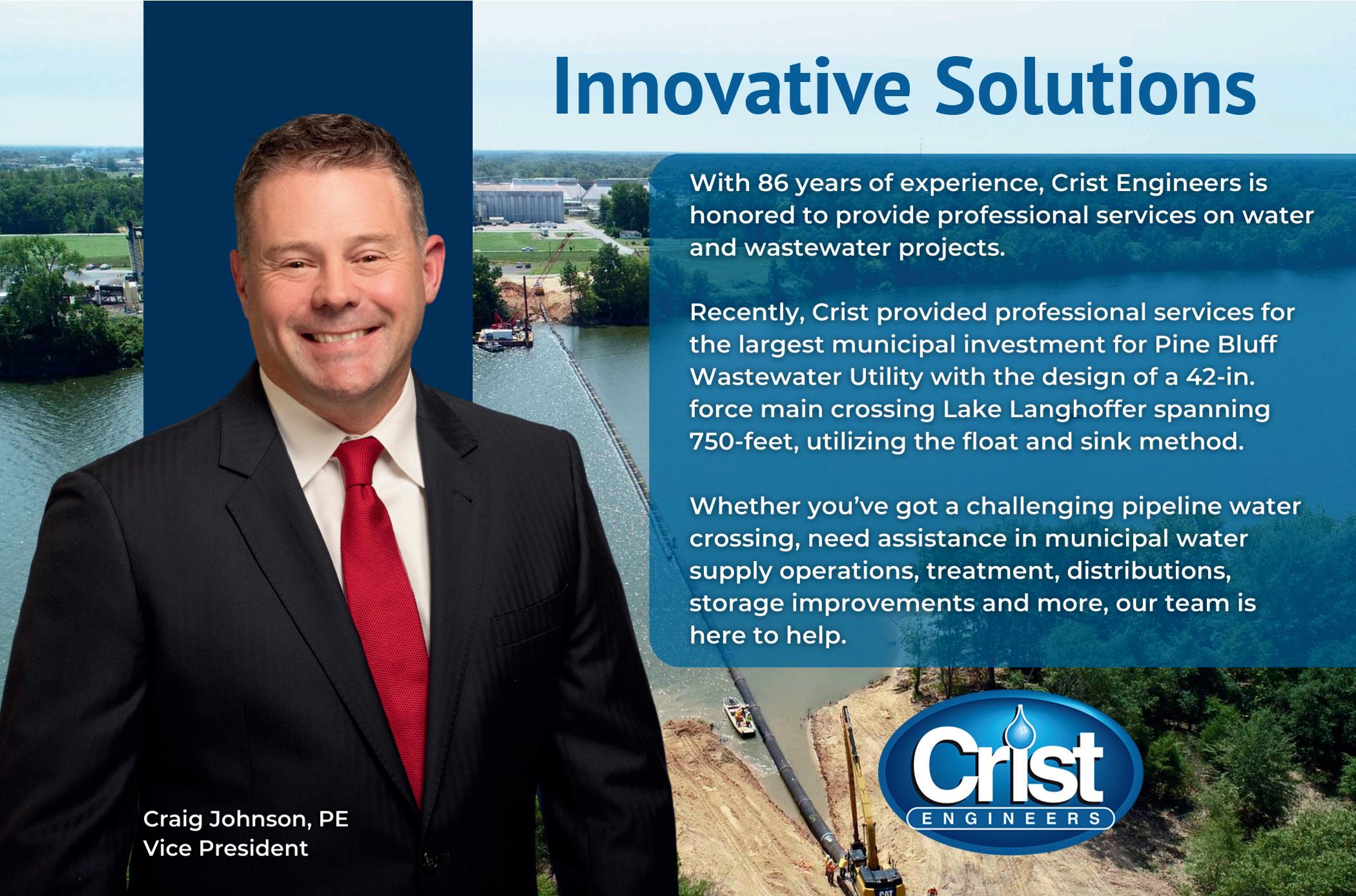
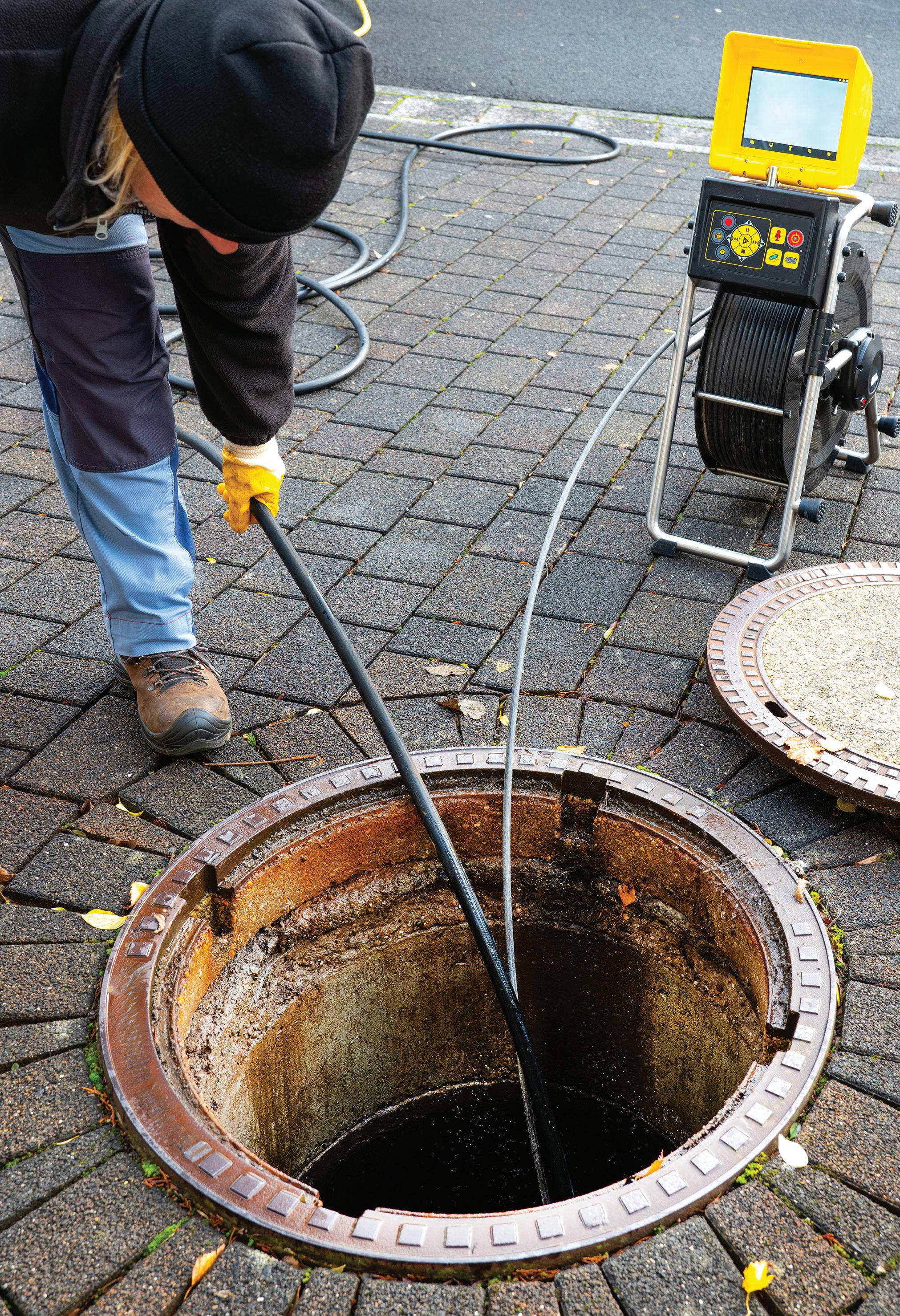
By Brandon Carnahan, Utility System Supervisor, Rogers Water Utilities
Sewer service is arguably the most undervalued utility provided to a community.
When the power goes out, it’s inconvenient – but in most cases, not terribly detrimental. If the water is turned off, it’s certainly disruptive to cooking, cleaning, and drinking, but rarely causes damage to people or property. The same goes for gas, cable, internet, and other ‘necessary’ amenities. None of them, however, have the same devastating impact as a sewer service interruption.
When a sewer line becomes blocked, the homes farthest upstream often remain unaffected and continue normal use. But the home closest to the blockage is made painfully aware of the issue. Sewage backs up through drains, toilets, cleanouts –anywhere it can escape. The damage this causes can be astronomical – and downright disgusting. As purveyors of sewer services, our top priority is to prevent and eliminate these situations. Yet, despite our efforts, we rarely receive recognition for the work we do.
At Rogers Water Utilities, we are constantly seeking innovation to address the challenges of our aging sewer infrastructure: root intrusion, inflow and infiltration (I&I), clay sewer mains, fats, oils, and grease (FOG), hydrogen sulfide (H₂S), and damage caused by other utilities, to name a few. In recent years, our primary focus has been on overflows and I&I.
Our first step: inspect the system. We needed to get eyes on as much of our sewer collection network as possible. After all, we can’t fix what we can’t see. While we already use a Camera System, only two trucks are available to inspect over 400 miles of sewer line – a time-consuming process. To speed things up, we invested in a camera nozzle for our jetter trucks. This tool gives us quick visual feedback on blockages and allows us to assess conditions inside the mainlines without pulling our CCTV crews off other jobs. Being able to quickly determine whether a line was blocked by roots, grease, or a collapse helped us prioritize more effectively. Our camera trucks could stay focused on critical inspections, while the jetter crews handled quick assessments.
Following the success of the camera nozzle, we explored other efficient inspection methods. That search led us to the Sonar system. This system is a device that uses active sonar and an acoustic receiver to determine whether a sewer line is clear, partially blocked, or fully obstructed – without the need for visual inspection or flow interruption. After reviewing the process and seeing it
BUT THE MOST IMPORTANT PART OF INSPECTING OUR MAINLINES IS NOT THE DATA COLLECTION – IT’S WHAT WE DO WITH THAT DATA.
in action, we purchased a set and used them extensively for about six months. While we didn’t achieve the footage volumes we had hoped for – the Sonar system teams covered about the same ground as our jetting crews – there was an unexpected benefit: accessing every manhole. Many of these hadn’t been opened in over a decade. Just by getting eyes on them, we discovered and repaired more issues than we anticipated. While the SL-RATs weren’t as much of a long-term solution for us, they proved valuable by forcing thorough manhole inspections.
As we ramped up inspections of our mainlines and manholes, we also began using flow monitoring to better target areas with I&I. Instead of inspecting the entire system blindly, our 14 flow monitors help us pinpoint where excess water is entering the system, allowing us to focus on specific basins. We are also
installing 13 permanent flow monitoring sites to build historical data and identify trends over time. I am confident this will help our crews focus time and resources more effectively.
But the most important part of inspecting our mainlines is not the data collection – it’s what we do with that data. We could spend years gathering information, but if we never act on it, how can we expect the system to improve or even maintain its current state? Good data only becomes valuable when it leads to action.
At Rogers Water Utilities, we have adopted a two-fold approach: we contract out major work like pipe bursting, CIPP linings, and manhole linings, while our in-house crews handle smaller repairs, injectable grout, and manhole maintenance. This combination allows us to tackle both large and small jobs efficiently, without
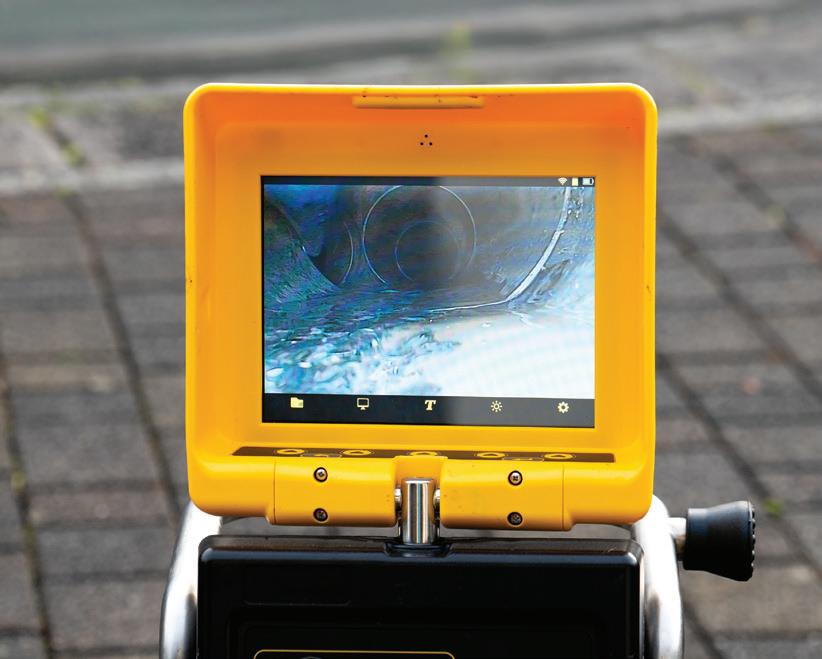
overextending our team or relying entirely on contractors.
Through our pursuit of innovative solutions, our management’s willingness to embrace new technologies, and our crews’ dedication to learning and adapting, Rogers Water Utilities continues to maintain our sewer collection system as practically and efficiently as possible. All the while, our customers remain none the wiser – never seeing the extensive work and care that goes into ensuring they never experience the nightmare of a sewer backup.
Instrument & Supply is proud to support The Digester relaunch. Advancing water reclamation with engineered excellence. From process instrumentation to control solutions, our team delivers the reliability and accuracy that critical infrastructure demands.
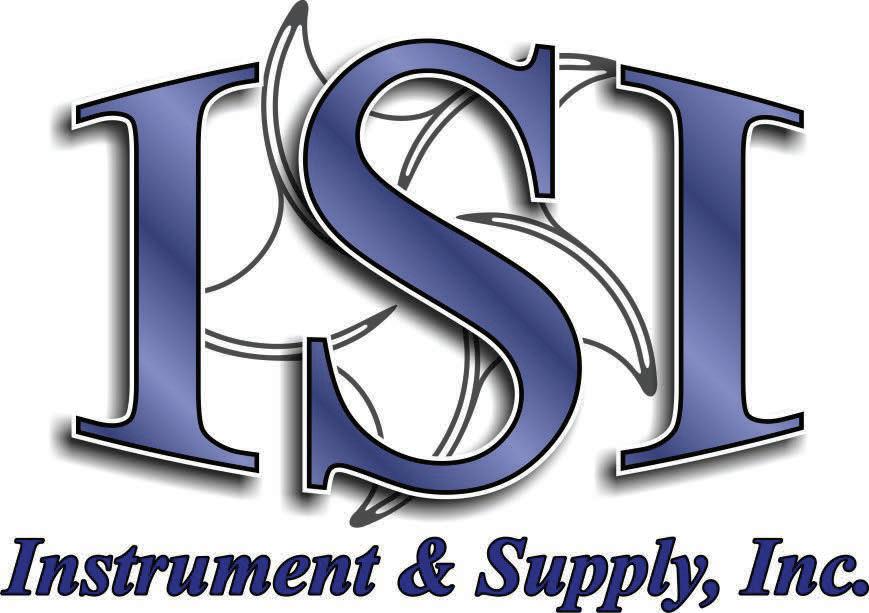

For over 45 years, Instrument & Supply has partnered with engineers and utilities to modernize water systems, optimize performance, and sustain the future of clean water. www.isiequip.com sales@isiequip.com
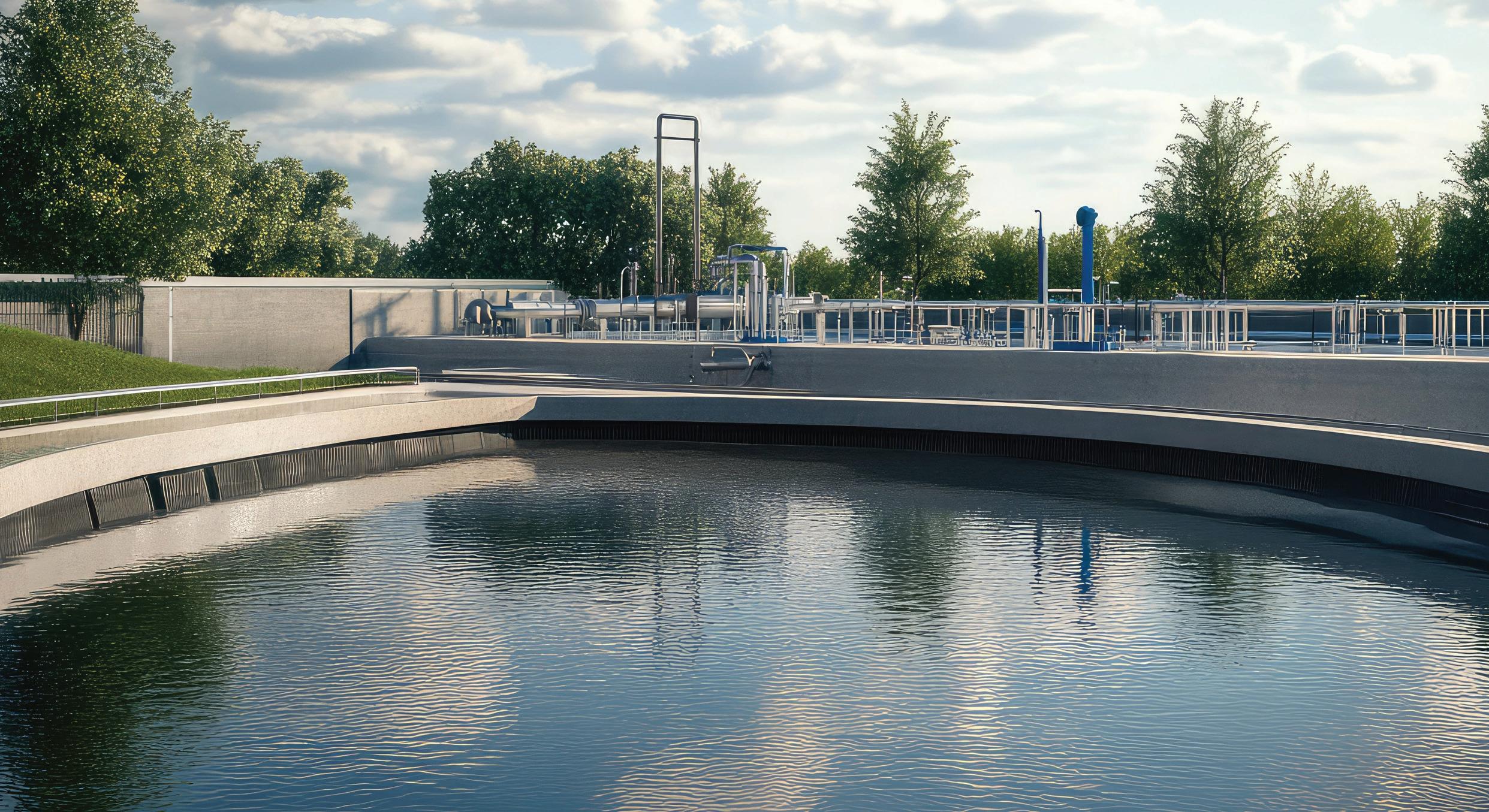
Co-authored by Stacy Cheevers, Plant Manager and Cody Hudson, Plant Engineer
Providing safe drinking water for a growing population remains an ongoing challenge, but it is one that the modern world has largely met. A lesser-known challenge, however, is the waste created in the process. Known in the industry as water treatment residuals (WTRs), this waste must be managed responsibly to protect the environment. Facing rising disposal costs and new regulations, the industry is now turning to innovative reuse solutions, transforming this industrial byproduct into a valuable resource for applications in agriculture and construction. However, managing WTRs in a sustainable, cost-effective, and environmentally responsible manner is an ongoing challenge for utilities nationwide. At the Beaver Water District (BWD), careful evaluation of disposal options, continual investment in solids processing improvements, and environmental responsibility have guided the district’s approach to handling residuals.
Several options exist for the disposal of water treatment residuals, but not all are feasible for BWD due to geographic, economic, or operational constraints.
• Discharge into the wastewater stream: In some locations, residuals can be discharged directly into a municipal wastewater system. This option is not available to BWD, as the district is not situated within a municipal area capable of receiving and treating the material.
• Liquid land application: Historically, liquid land application has been an effective method for reusing residuals. However, the rising cost of land and the transition of previously used application sites into residential subdivisions make this option less viable for the future.
• Open Air Drying in lagoons: Lagoons are another traditional approach, but the land requirements and construction costs for the volume of solids produced at BWD are prohibitive. This makes lagoons impractical as a long-term solution.
• Dewatering: BWD currently hauls 20% solid WTRs and land applies at a wastewater sludge disposal site operated by the City of Fayetteville. WTRs are dewatered using centrifuges to reduce hauling weight and volume. The primary coagulant used at the BWD is liquid alum. This alum is up to approximately 40% of the solids, and provides a beneficial use, as it binds phosphorus in the soil, thus preventing nutrients from being transported in runoff to nearby waterways. Land application also keeps WTRs out of the local landfill, which has limited space and has historically restricted the amount of WTRs that can be disposed of on a daily basis.
BWD manages two primary waste streams from filter backwash and sedimentation basin blowdown. Each follows a carefully designed treatment sequence to ensure proper handling and compliance with discharge regulations.
• Filter backwash treatment: Water from a filter backwash first enters an equalization basin, where flows are balanced before moving into clarifiers. Decant from the clarifiers is discharged under an NPDES permit, while the solids are directed to a thickener for further concentration.
• Sedimentation basin blowdown: Solids from sedimentation basins combine with sludge from the clarifiers and are routed to a gravity thickener. The thickener separates the liquid, which is discharged under the same NPDES permit, from the solids and concentrates the solids further.
THE BEAVER WATER DISTRICT IS POSITIONING ITSELF TO HANDLE RESIDUALS IN A WAY THAT IS BOTH ENVIRONMENTALLY RESPONSIBLE AND OPERATIONALLY SUSTAINABLE.
The thickened sludge, typically 1–3% solids, is pumped to a holding tank for dewatering using centrifuges, where the solids reach approximately 20% concentration. Centrate from the centrifuge is returned to the head of the process, and the dewatered material is stored in a pit until it can be hauled away for land application. This integrated process ensures efficient solids recovery and minimizes environmental impact while maintaining compliance with regulatory requirements.
Growing water demands, means increased WTR production. To meet these increasing demands BWD is investing in significant upgrades as part of its plant expansion. This includes retrofit of existing clarifier and thickener units and replacing aging centrifuges as well as adding additional machines for redundancy.
Several improvements are planned for the new solids facilities. One improvement will allow waste streams to be pumped continuously to the clarifiers, replacing the pulsed flows of the existing system. This improvement is expected to reduce disruptions to the sludge blanket and encourage more consistent settling.
Currently, lagoons are used to manage solids during process upsets. However, their geometry and lack of piping make it difficult to return material for reprocessing. The upgraded facility will feature a dedicated storage area with a sloped floor and pumping capability, providing greater flexibility for re-processing solids after a disruption.
Additionally, a new dewatered solids concrete holding pad will provide temporary storage when land application is not possible due to weather or field conditions. This project will ensure greater reliability and operational resilience.
The Beaver Water District has taken a proactive approach to managing water treatment residuals, recognizing both the limitations of traditional disposal methods and the need for
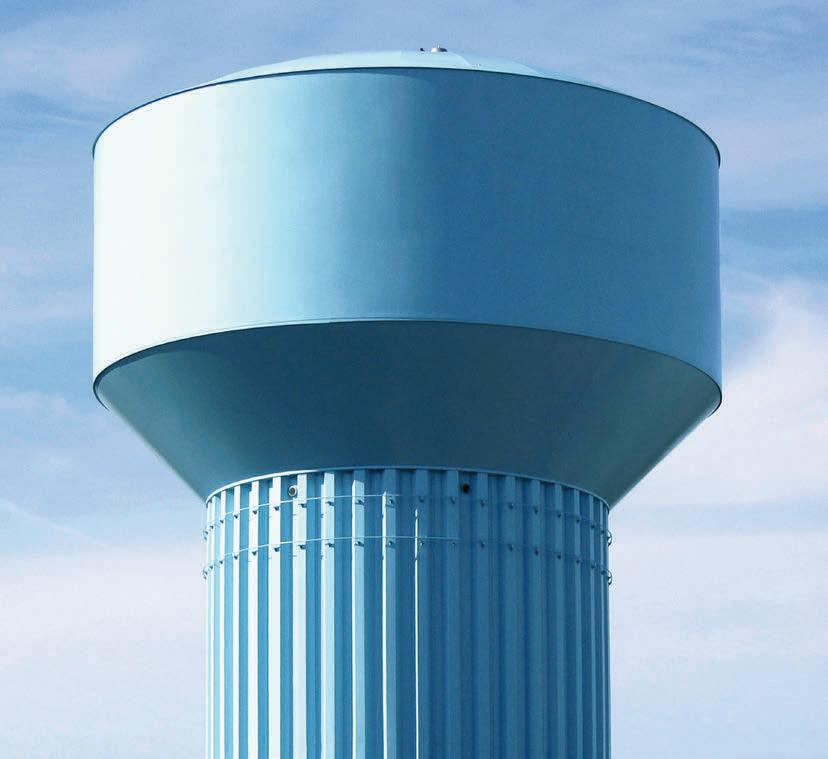
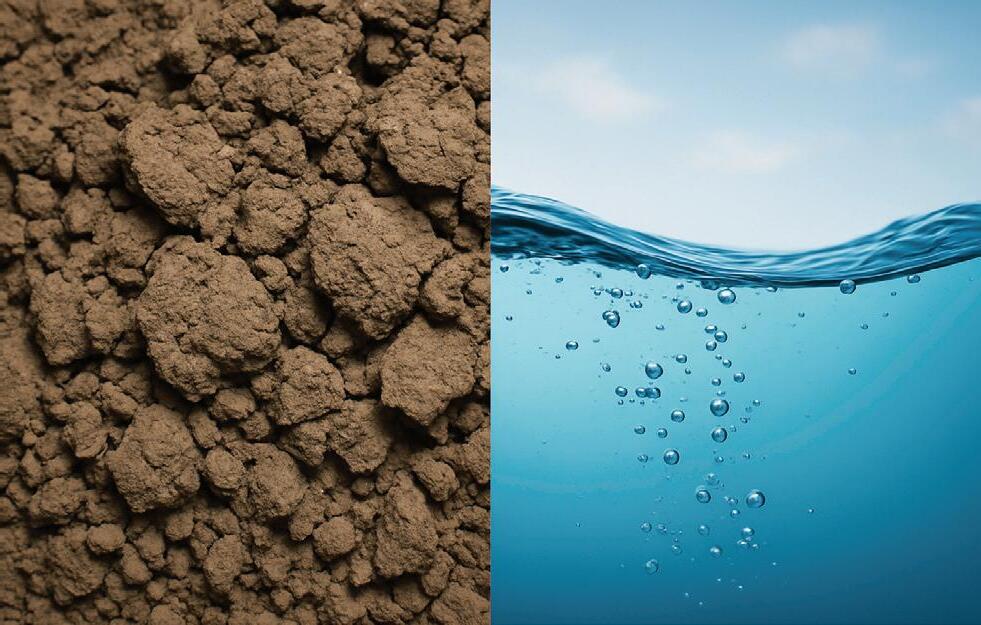
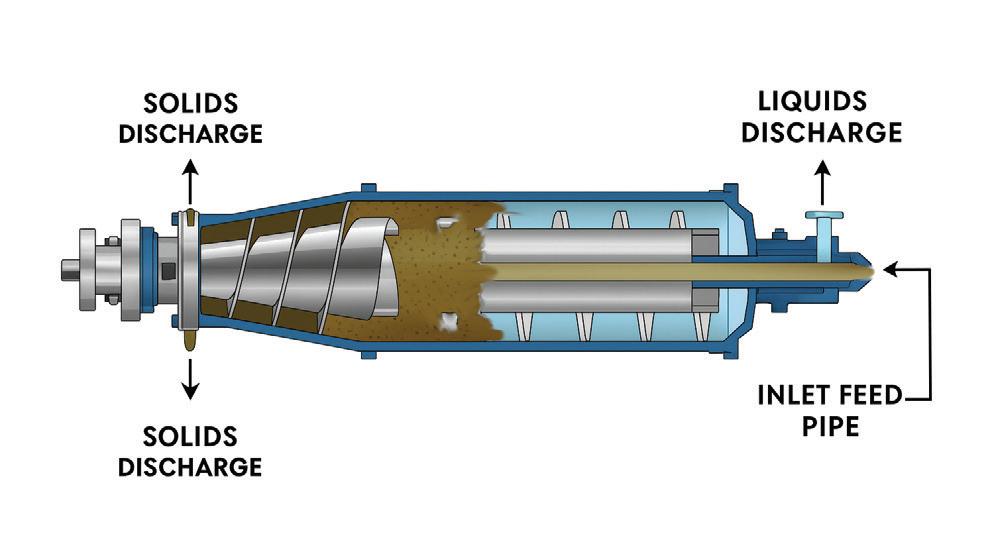
modernized processing solutions. Through careful planning, technological upgrades, and infrastructure investment, BWD is positioning itself to handle residuals in a way that is both environmentally responsible and operationally sustainable. These efforts not only support regulatory compliance but also demonstrate the district’s commitment to long-term stewardship of the region’s water resources.
Your job is to protect critical water infrastructure assets.
Ours is to help you preserve the life of those assets.
Sherwin-Williams Protective & Marine stands by our customers and the time-tested performance of our solutions.
Your dedicated Sherwin-Williams Representative: Scott Keith — 417-825-2175 | scott.a.keith@sherwin.com

By Rebecca Burkman, Director of Environmental Affairs, Little Rock Water Reclamation Authority
An Enforcement Response Plan (ERP) is a vital component of any industrial pretreatment program. It provides a structured, consistent approach to respond to violations of pretreatment standards, ensure publicly owned treatment works (POTWs) maintain regulatory compliance, and protect their treatment processes.
One of the ERP’s most important functions is ensuring fairness and consistency in enforcement.
Industrial users differ in size and complexity, and without a standardized plan, enforcement actions could appear arbitrary or biased. A welldeveloped ERP minimizes this risk by clearly outlining how violations are addressed, reducing the likelihood of disputes and claims of unfair treatment.
This consistency not only protects the utility legally but also builds trust with the regulated community.
The ERP is not just an internal guideline –it is reviewed and approved by the utility’s approval authority, in our case DEQ. This approval reinforces the importance of following the plan as written. Deviating from it can weaken the utility’s enforcement position and compromise its credibility.
A strong ERP is detailed and comprehensive. It categorizes violations –such as late reporting, unauthorized discharges, or exceedances of pollutant limits – and assigns appropriate enforcement responses, ranging from verbal warnings to formal administrative orders. It also includes timelines, escalation procedures, and documentation requirements, ensuring staff have clear guidance for every scenario.
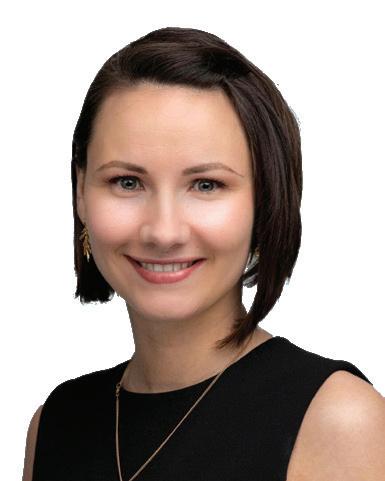
Beyond enforcement, the ERP encourages proactive compliance. When industries understand the consequences of non-compliance and see that enforcement is fair and predictable, they are more likely to maintain proper pretreatment practices.
In summary, an ERP is essential for protecting the utility, ensuring equitable enforcement, and promoting environmental stewardship. By adhering to a detailed, approved plan, POTWs can uphold the integrity of their pretreatment programs and foster a cooperative relationship with industrial users.
If you would like to see a copy of LRWRA’s ERP, feel free to reach out at rebecca.burkman@lrwra.com.
Our Mission
Inspiring the water community in pursuit of human and environmental well-being
Our Vision
Life free of water challenges
Our Three-Year Outcome Statement
Amplify the stories of water to grow, strengthen, and diversify the water community
Our Strategic Goals
Goal 1
Attract and develop a diverse and passionate water workforce
Goal 1 Strategies
1. Raise public awareness about the importance of water and the water workforce
2. Reduce barriers to workforce entry and retention
3. Provide extraordinary opportunities for connection, growth, and education
4. Cultivate strategic partnerships
Goal 2
Cultivate a purposedriven community to sustainably solve water challenges for all
Goal 2 Strategies
1. Drive connection and collaboration for the development of innovative solutions
2. Deliver best-in-class member experience
3. Creatively develop and deliver content and programming
Our Core Values

Goal 3
Lead the transformation to the Circular Water Economy
Goal 3 Strategies
1. Convene stakeholders to craft WEF’s Circular Water Economy framework and best practices
2. Proliferate WEF’s Circular Water Economy framework and best practices
3. Champion adoption of Circular Water Economy
4. Eliminate barriers to Circular Water Economy adoption
Lead boldly with purpose and agility
Focus on our customers through empathy and service







Collaborate for collective impact
Integrate Diversity, Equity, and Inclusion in all we do
Streamline is a 12-part series presented by 2024 graduates of the Water Environment Federation (WEF; Alexandria, Virginia) Water Leadership Institute (WLI). Each article highlights a different challenge in the water sector. For more information on WLI, visit www.wef.org/wli.

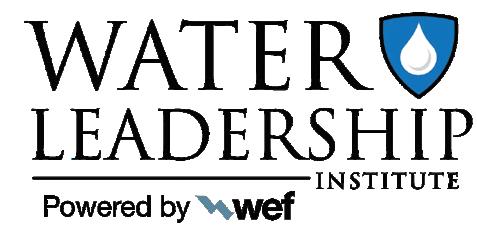

By Lindsay Kirsch, Darcy Male, Gus O’Leary, Tiffany Poole, Shahrzad Saffari, Luke Thompson, and Linda Vo
Water is fundamental to life, yet its quality is increasingly threatened by emerging contaminants that pose risks to health, the environment, and economies. Microplastics, per- and polyfluoroalkyl substances (PFAS), and 6-p-phenylenediamines quinone (6PPD-q) are among the substances generating concern for the water sector. To uphold public trust, it is essential that municipalities and organizations demonstrate effective leadership and clear communications as they research, restrict, and remediate these contaminants.
Microplastics – extremely small pieces of synthetic polymers that are released when plastic breaks down –present a unique challenge due to a lack of understanding about their sources, behavior, and long-term impact on human health and the environment. Two recent initiatives showcase the power of leadership and communications in advancing this critical work.
In 2015, the Florida Microplastic Awareness Project, funded by a grant from the U.S. National Oceanic and Atmospheric Administration (NOAA), mobilized volunteers to collect and categorize microplastics while hosting outreach events to inform smaller communities of microplastics pollution. More recently, NOAA has announced collaborations with the University of New York (New York City) and the University of Hawai’i (Honolulu) to further study microplastics and promote environmental stewardship.
In another project, researchers at the University of West Florida (Pensacola) collaborated with a local middle
school in 2021 to collect and organize microplastics from Pensacola Bay water samples. Students learned more about not only microplastics pollution, but also the importance of community awareness.
Both projects highlight the impact of academic leaders taking accountability and fostering trust between research institutions and the community. Leadership and communication empowered citizens and reduced ecosystem pollution in parallel with rigorous research efforts.
• Promote exploration
• Depend on transparent, fact-based messaging
• Communicate developments early and often in a digestible way
• Establish an understanding of restrictions and impacts
• Evaluate immediate and long-term actions collaboratively
• Educate stakeholders clearly and consistently
• Explore alternatives
Engage in short-term & long-term planning to inform decision making
• Build pride around & provide updates on remediation efforts and effectiveness
WATER IS FUNDAMENTAL TO LIFE, YET ITS QUALITY IS INCREASINGLY THREATENED BY EMERGING CONTAMINANTS THAT POSE RISKS TO HEALTH, THE ENVIRONMENT, AND ECONOMIES.
Regulatory bodies have recently focused on PFAS restrictions because of their links to adverse health effects and pervasive presence in the environment –an undertaking that requires proactive leadership and effective communication.
The U.S. Environmental Protection Agency (EPA) led the charge in addressing PFAS, issuing interim Drinking Water Health Advisories in 2009. These advisories provided public water systems with updated information about ongoing health assessments while the agency established maximum contaminant levels (MCLs). In 2024, EPA announced a national drinking water regulation for six PFAS compounds and finalized MCLs.
Advocacy groups also played a crucial role. Grassroots campaigns successfully petitioned the U.S. Food and Drug Administration (FDA) to ban long-chain PFAS in food packaging in 2016. Continued pressure from petitions, scientific data, and state bans led FDA to announce a phaseout of shortchain variants of PFAS in 2020. In 2024, FDA announced the complete removal of PFAS from food packaging, marking a critical step toward reducing environmental and health hazards associated with these contaminants.
These efforts illustrate how transparent communications and grassroots advocacy can drive regulatory change. Persistent, collective action can be a powerful force against emerging contaminants.
In 2020, scientists identified 6PPD - q – a byproduct of a rubber tire stabilizer often found in urban runoff – as a key factor in the mortality of endangered coho salmon in the Pacific Northwest. Remediation required collaboration among native tribes, nonprofit organizations, universities, and regulators to develop best management practices for treatment as well as the use of alternative materials in new products.
The Puget Sound National Estuary Program’s Stormwater Strategic Initiative spearheaded efforts by funding best management practices for 6PPD - q hotspots. The Nisqually Indian Tribe partnered with environmental organizations to pilot a biofiltration system to capture and filter stormwater runoff. Within 11 months, the system significantly reduced 6PPD - q levels in treated water samples. As an alternative to treatment-based remediation, regulators, state governments, and other organizations promoted the use of safer product material alternatives to curb contamination at its source.
Although still in the early stages of the life cycle, this initiative demonstrates that strong collaborative leadership and effective communication among local tribes, states, and the federal government not only helped address immediate contamination concerns but also fostered environmental stewardship in the community.
• Lindsay Kirsch – Environmental Project Manager, Sewerage and Water Board of New Orleans
• Darcy Male – Project Manager, WSSC Water (Laurel, Maryland)
• Gus O’Leary – Principal Engineer, Kleinfelder (San Diego)
• Tiffany Poole – Supervising Environmental Chemist and Laboratory Manager, Metropolitan Water Reclamation District of Greater Chicago
• Shahrzad Saffari – Water Treatment Specialist, Yokogawa Corp. of America (Sugar Land, Texas)
• Luke Thompson – Water Engineer, HDR Inc. (Omaha, Nebraska)
• Linda Vo – Senior Policy and Program Manager, California Water Efficiency Partnership (Sacramento, California)
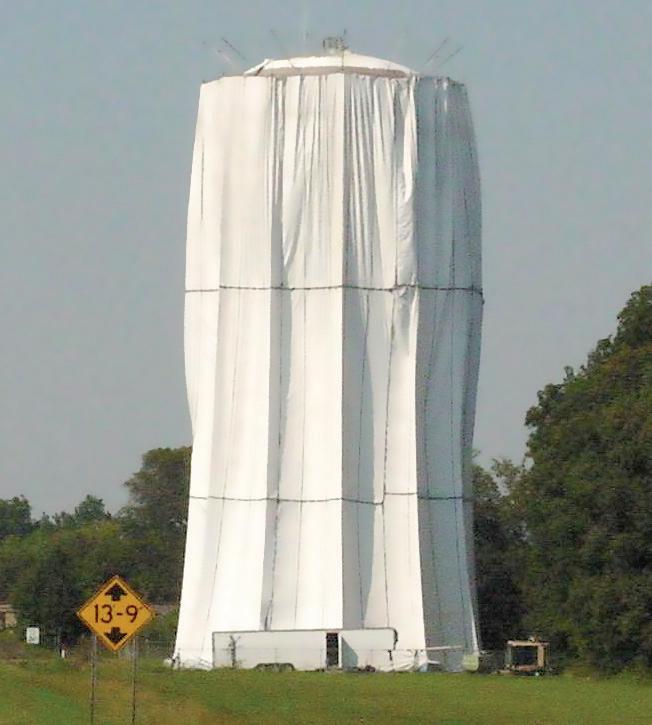
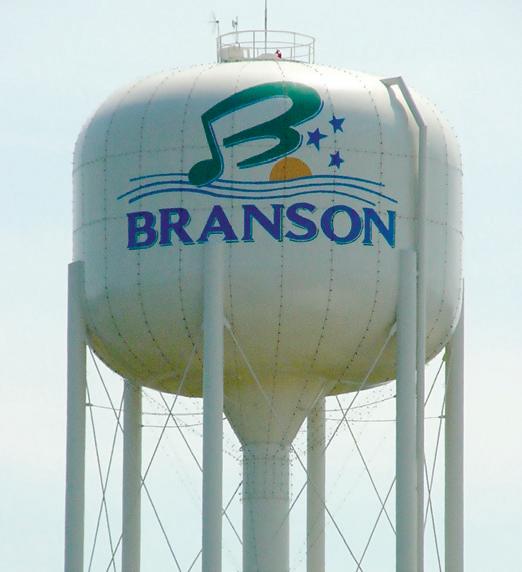
First-of-its-kind initiative to harness AI to solve critical water challenges. New information released today on data center best-practices to minimize water impact in the age of AI.
“THE WATER-AI NEXUS CENTER OF EXCELLENCE WILL ACCELERATE INNOVATION BY CONNECTING WATER PROFESSIONALS WITH AI EXPERTS.”


The Water Environment Federation (WEF), Amazon.com, Inc. (NASDAQ: AMZN), The Water Center at the University of Pennsylvania (WCP), and The Leading Utilities of the World (Leading Utilities) jointly announced today the creation of the Water-AI NexusTM Center of Excellence, a groundbreaking collaboration that will develop sustainable water practices for AI infrastructure while also using AI to solve global water challenges. This knowledge hub at the confluence of water and AI brings together water utilities, technology companies, and researchers to address the complex relationship between digital infrastructure and water sustainability.
The Water-AI Nexus was unveiled during Climate Week NYC, the largest annual climate event in the United States, and will focus on two critical missions:
1. Water for AI: Ensuring AI infrastructure uses water as efficiently as possible
2. AI for Water: Leveraging AI capabilities to solve pressing water scarcity and management challenges Organizations across the water and technology sectors are invited to engage in this collaborative effort at water-ai-nexus.org – the central hub for the Water-AI Nexus community.
“Water utilities worldwide are facing unprecedented challenges from climate change and aging infrastructure, while simultaneously working to serve communities that depend on reliable, affordable water services,” said Howard Carter, president of the Water Environment Federation.
“The Water-AI Nexus Center of Excellence will accelerate innovation by connecting water professionals with AI experts to develop solutions that benefit both sectors as well as the communities they serve.”
Key Initiatives of the Water AI Nexus:
• Framework Development: Establishing standards and best practices for water use that can be shared across the data processing industry
• Insight Report: Today’s release of “Principles for Sustainable Water Use by Data Centers” provides a roadmap for data center operators to minimize water
• Using sustainable water sources
• Pursuing water replenishment to deliver water back to communities
• Knowledge Sharing: Case studies and research findings through publications and events
• Cross‑Sector Collaboration: Uniting water utilities, AI developers, researchers and government officials “We believe responsible innovation means both addressing our water footprint and using technology to solve global water challenges,» said Beau Schilz, water principal at Amazon Web Services (AWS). “At Amazon, we strive to reduce water use in our operations, which include logistics sites such as fulfilment centers, as well as in our corporate offices and grocery stores. We’re also committed to returning more water to communities than we use across our data centers by 2030 – being a founding leader of the Center of Excellence will help not only Amazon in its goals, but others as well, as we aim to collectively transform water management worldwide.”
The Water-AI Nexus Center of Excellence brings together expertise across water, academic, and utility sectors to ensure AI growth benefits our water resources and reduces stress on our water resources. By maximizing efficiency, eliminating unnecessary water use, and investing in community-tailored solutions, we can collectively ensure that technological advancement and environmental stewardship will – and must – advance together.
“BY CONNECTING RESEARCH, INDUSTRY PRACTICE, AND POLICY, WE CAN ACCELERATE INNOVATIONS THAT ADDRESS WATER SCARCITY.”
– Howard Neukrug, The Water Center at Penn

“THE INTERSECTION OF WATER MANAGEMENT AND ARTIFICIAL INTELLIGENCE IS A TURNING POINT FOR THE SECTOR.”
–
Christopher Gasson
, Global Water Intelligence
“The Water Center at the University of Pennsylvania is proud to bring academic expertise to this critical collaboration,” said Howard Neukrug, executive director of The Water Center at Penn. “By connecting research, industry practice, and policy development, we can accelerate innovations that address water scarcity while enabling responsible technological advancement.”
Christopher Gasson, publisher of Global Water Intelligence and founder of Leading Utilities, added “The intersection of water management and artificial intelligence is a turning point for the sector, both a critical challenge and unprecedented opportunity. The Water-AI Nexus will be a vital platform where utilities can directly collaborate with technology innovators to ensure water sustainability isn’t compromised by digital growth.”
The Water-AI Nexus was featured at WEFTEC in Chicago (Sept. 27 – Oct. 1), with:
• Three full days of dedicated content
• A media panel with the founding leaders
• Panel discussions with industry experts
• Networking opportunities for water and technology professionals
“RESPONSIBLE INNOVATION MEANS ADDRESSING OUR WATER FOOTPRINT WHILE USING TECHNOLOGY TO SOLVE GLOBAL CHALLENGES.”
–
Beau Schilz, Amazon Web Services
About Amazon Amazon is guided by four principles: customer obsession rather than competitor focus, passion for invention, commitment to operational excellence, and long-term thinking. Amazon strives to be Earth’s Most Customer-Centric Company, Earth’s Best Employer, and Earth’s Safest Place to Work. Customer reviews, 1-Click shopping, personalized recommendations, Prime, Fulfillment by Amazon, AWS, Kindle Direct Publishing, Kindle, Career Choice, Fire tablets, Fire TV, Amazon Echo, Alexa, Just Walk Out technology, Amazon Studios, and The Climate Pledge are some of the things pioneered by Amazon. For more information, visit amazon.com/about and follow @amazonnews.
About The Water Center at Penn
The Water Center at Penn is a community-focused research center working to find integrated solutions to the multiple challenges facing our world’s water systems and their watersheds. We strive to be a trusted, reliable partner whose work accelerates water equity by connecting, convening, and collaborating across the sector. The Water Center’s research approach is centered around working alongside communities, bringing their knowledge and expertise to the solutions addressing their water challenges, sharing power and
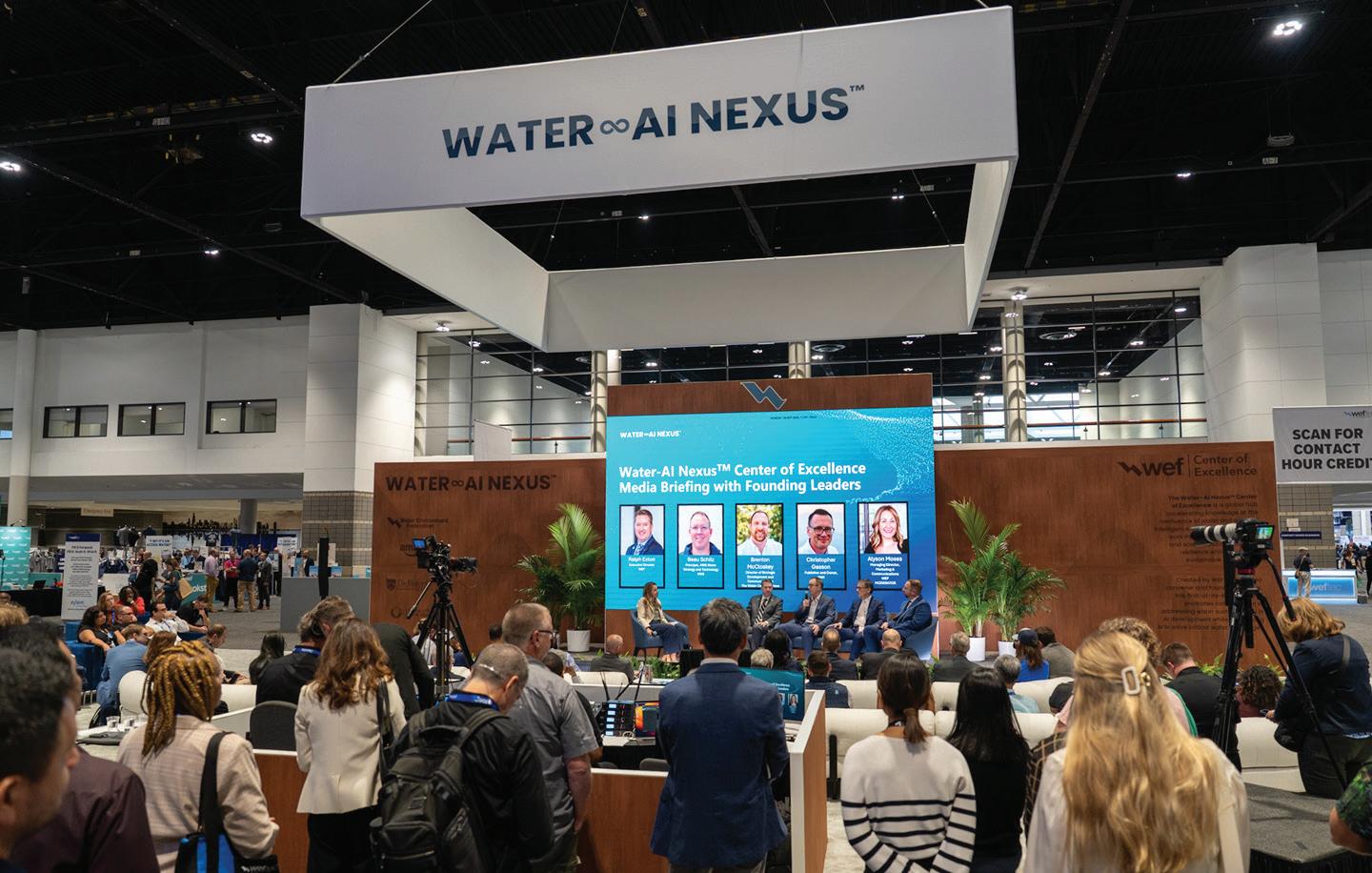
responsibility, and encouraging communities to take the lead in determining priorities, questions to be asked, and the approach to answering those questions. We share resources, education, training, and applied knowledge to support community goals. For more information, visit watercenter.sas.upenn.edu.
About Leading Utilities of the World
Leading Utilities of the World is a network of the world’s most forward-thinking water and wastewater utilities, as defined by the network’s 14 distinct innovation areas. Its members represent the gold standard of utility innovation and performance throughout the developed world’s water sector. Leading Utilities is an initiative of the Global Water Leaders Group, a not-for-profit organisation helping to tell a better story for water worldwide by recognising achievement, providing a network for sharing ideas, and inspiring others to improve. Primarily a CEO-level organisation, it is funded by its Foundation Partner Jacobs and Corporate Member Grundfos, and collaborates with Association Partner the Water Environment Federation. There are no membership fees for its utilities, who meet three times a year at major water conferences around the world. www.leadingutilities.org
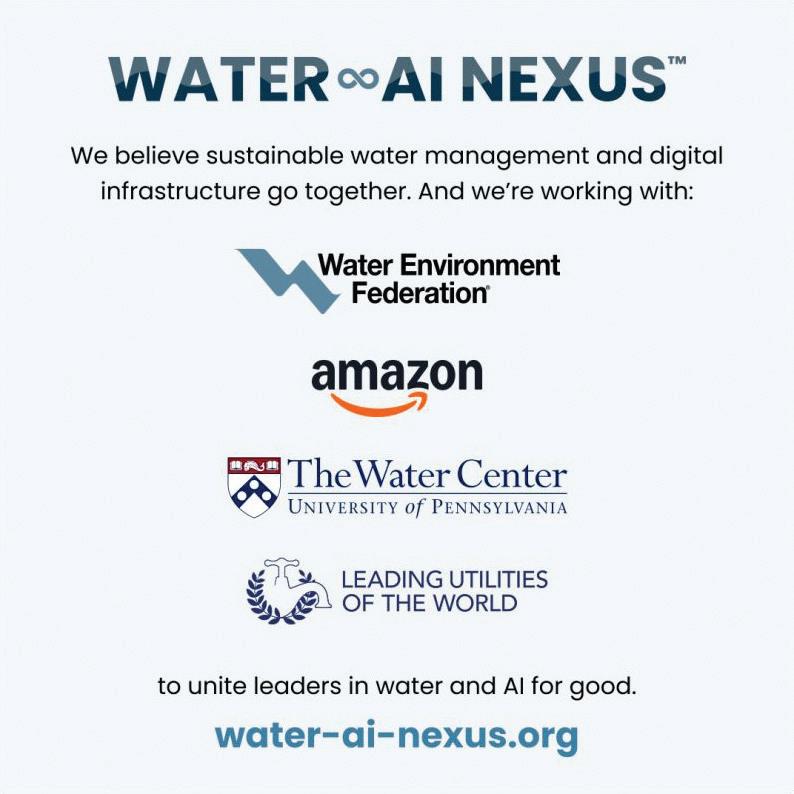

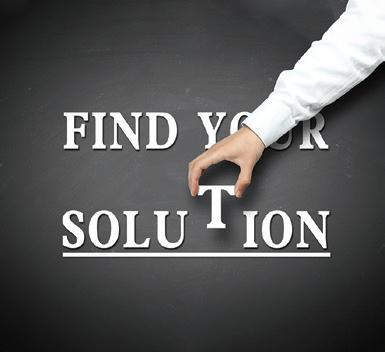
THE DIGESTER is made possible by the companies that convey their important messages on our pages. We thank them for their support of the Arkansas Water Environment Association and its publication, and encourage you to contact them when making your purchasing decisions. To make it easier to contact these companies, we have included the page numbers of their advertisements, their phone numbers, and, where applicable, their websites.
https://industrial.sherwin-williams.com/na/ us/en/protective-marine/industry-solutions/ water-wastewater.html

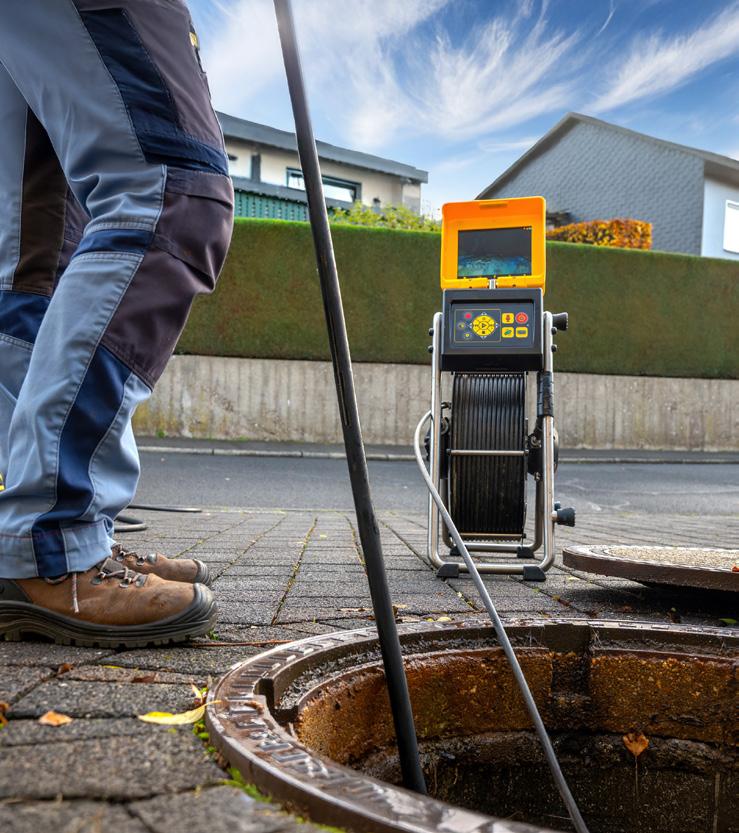

SOUTHEAST’S MOST
DEALER DISTRIBUTOR HERE TO SUPPORT YOU
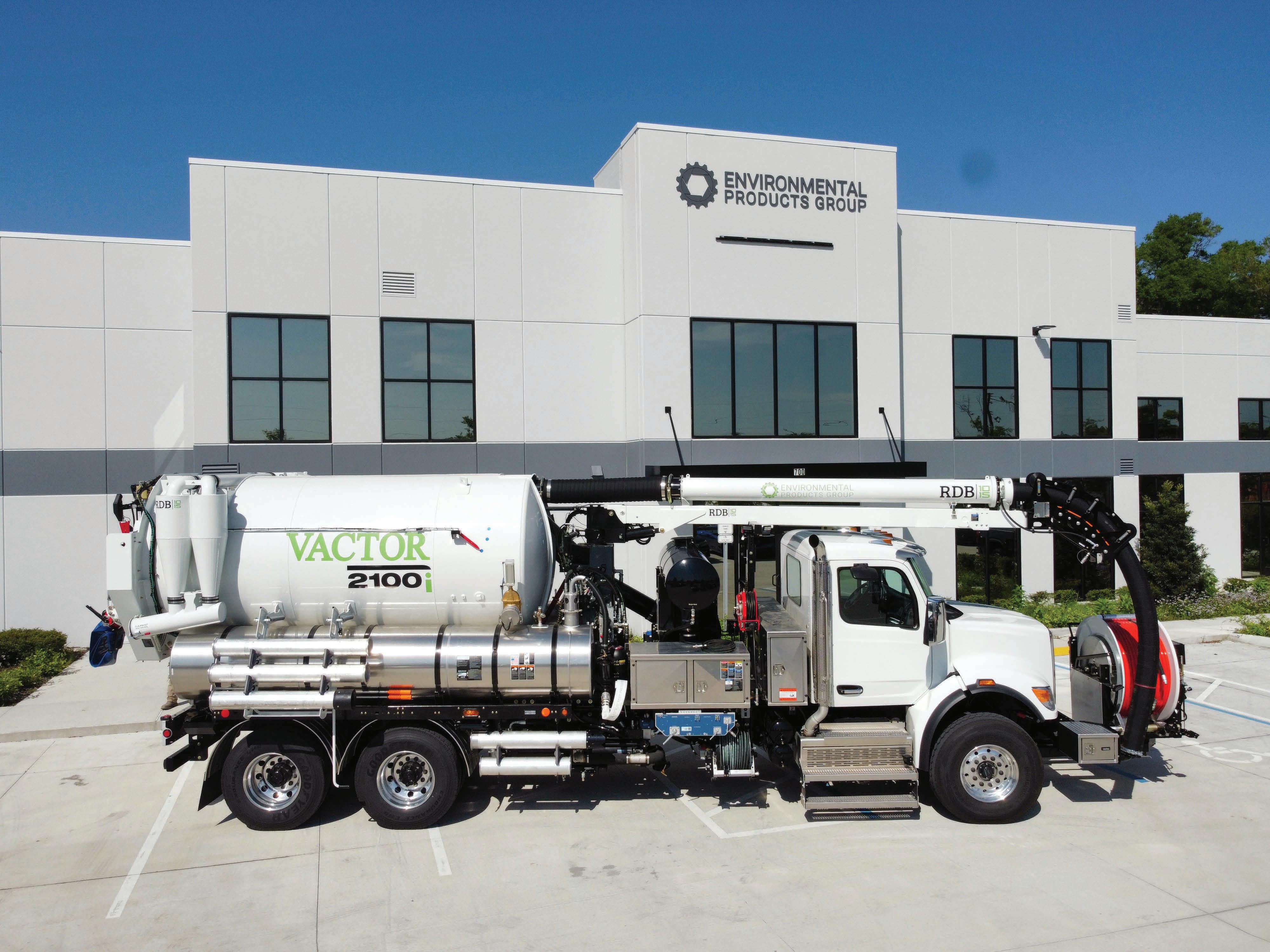
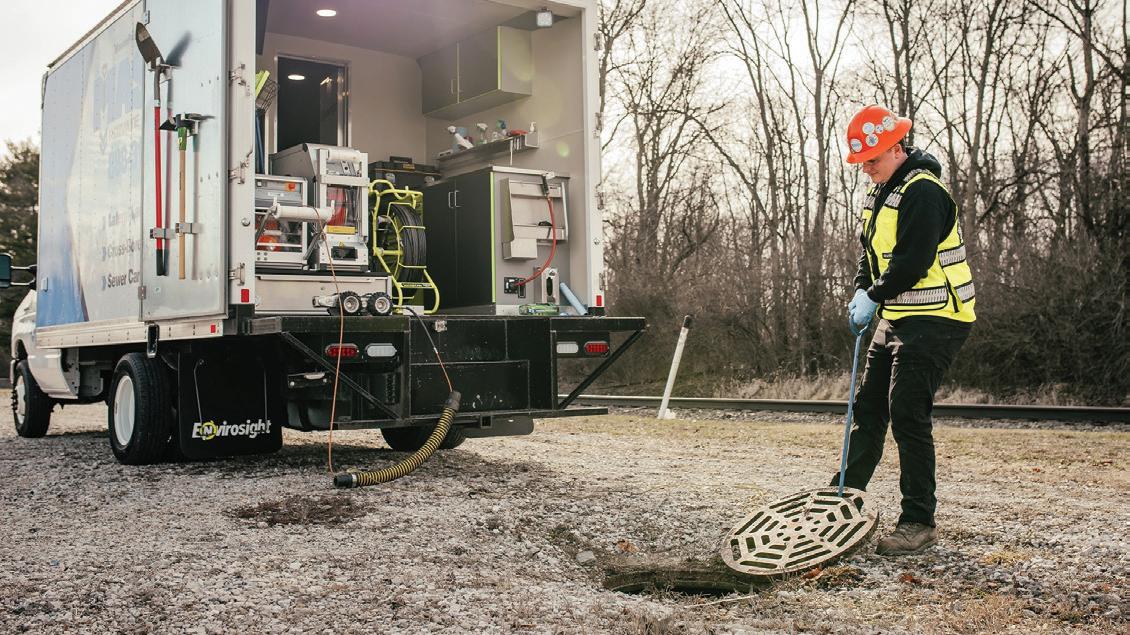
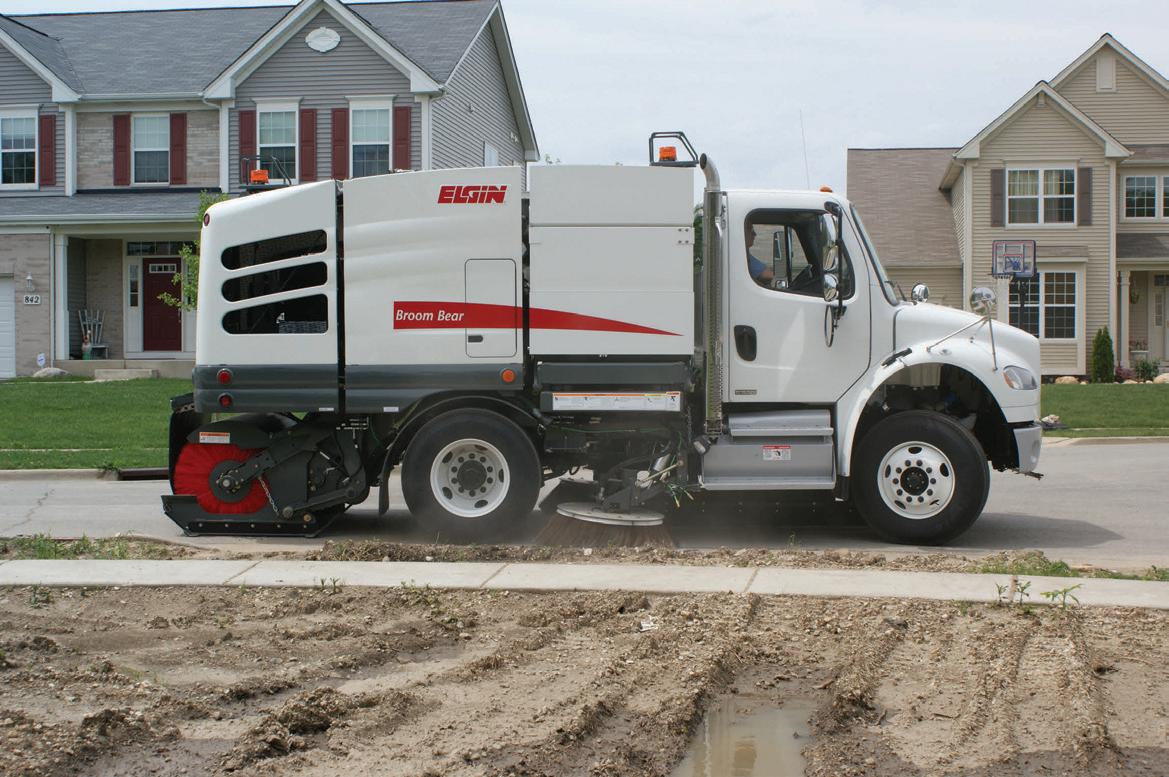
MUNICIPAL AND INFRASTRUCTURE
MAINTENANCE EQUIPMENT
SALES. RENTALS. PARTS.
